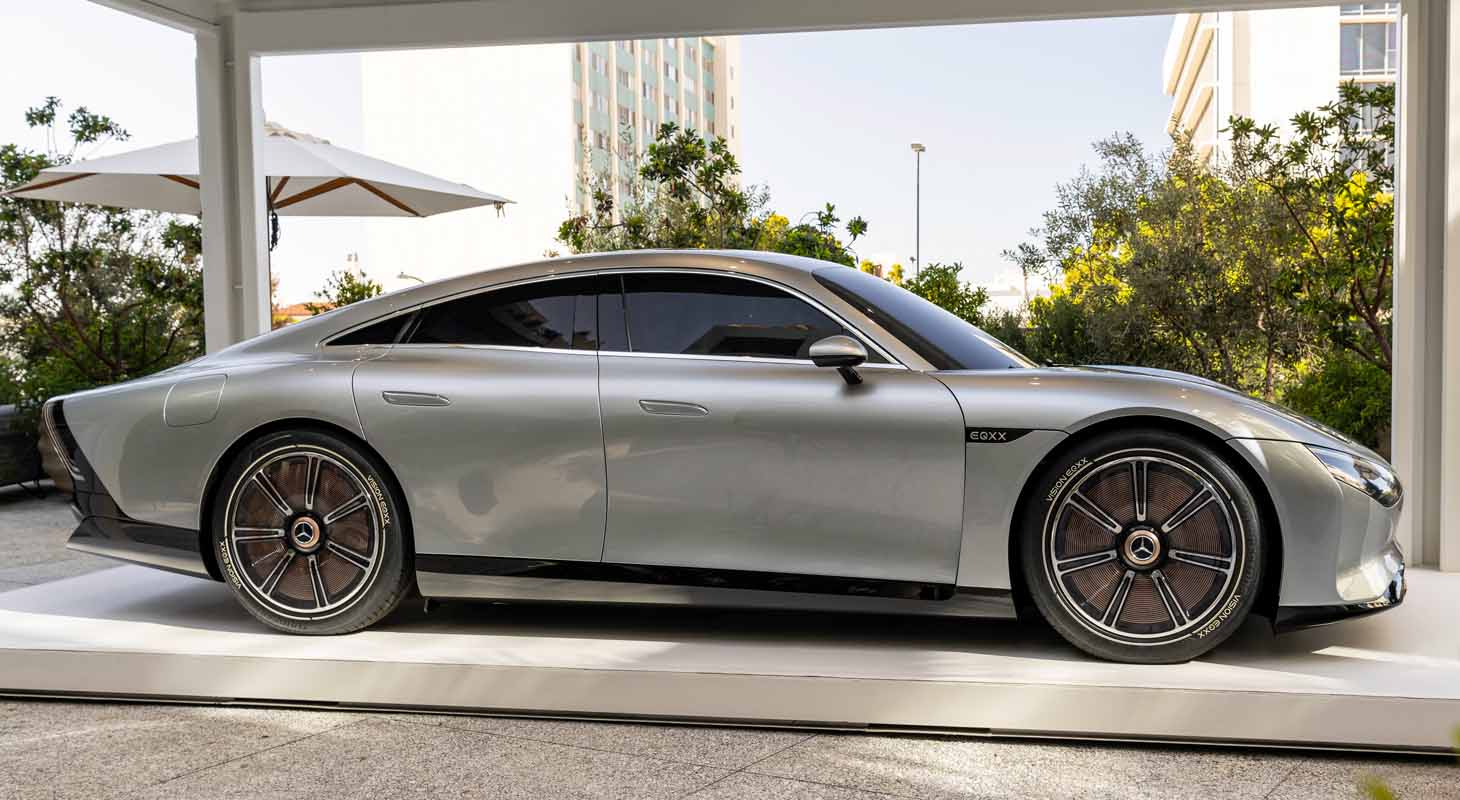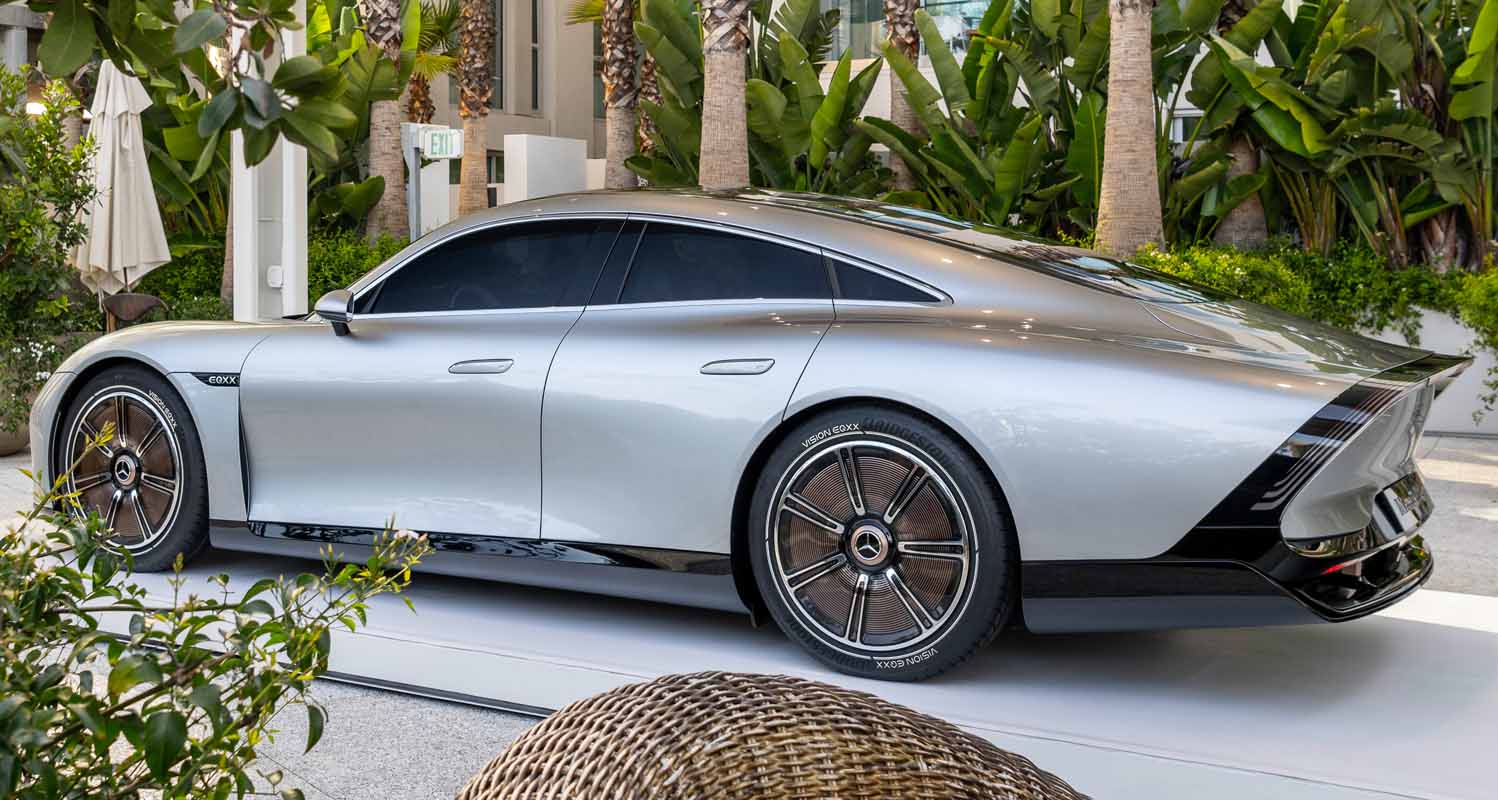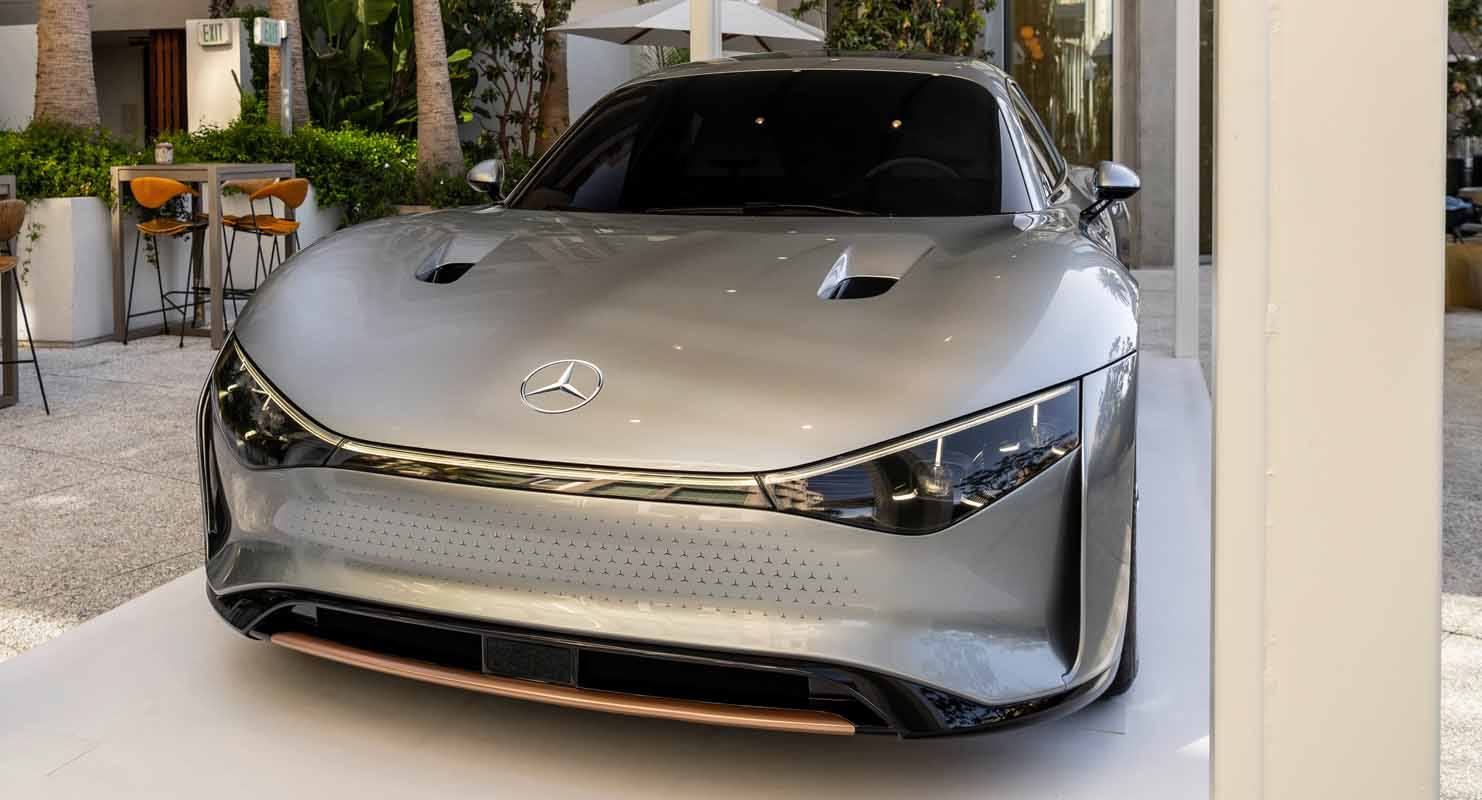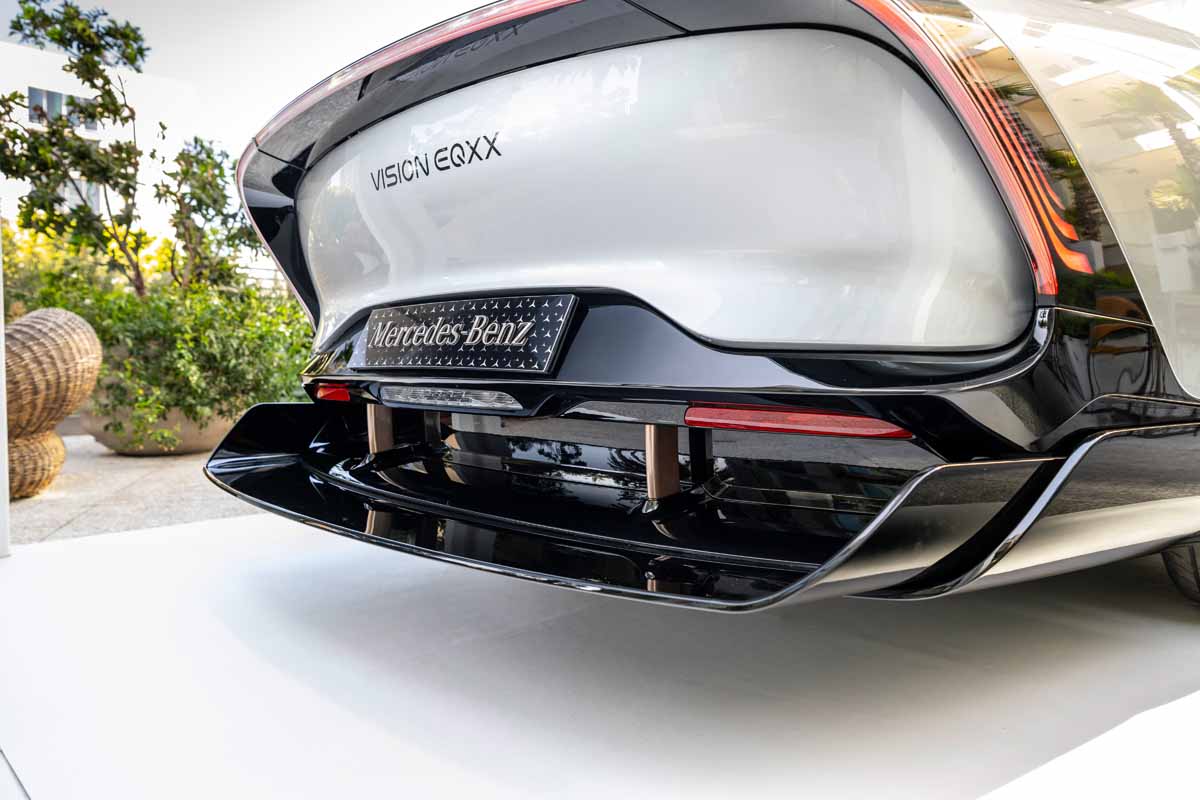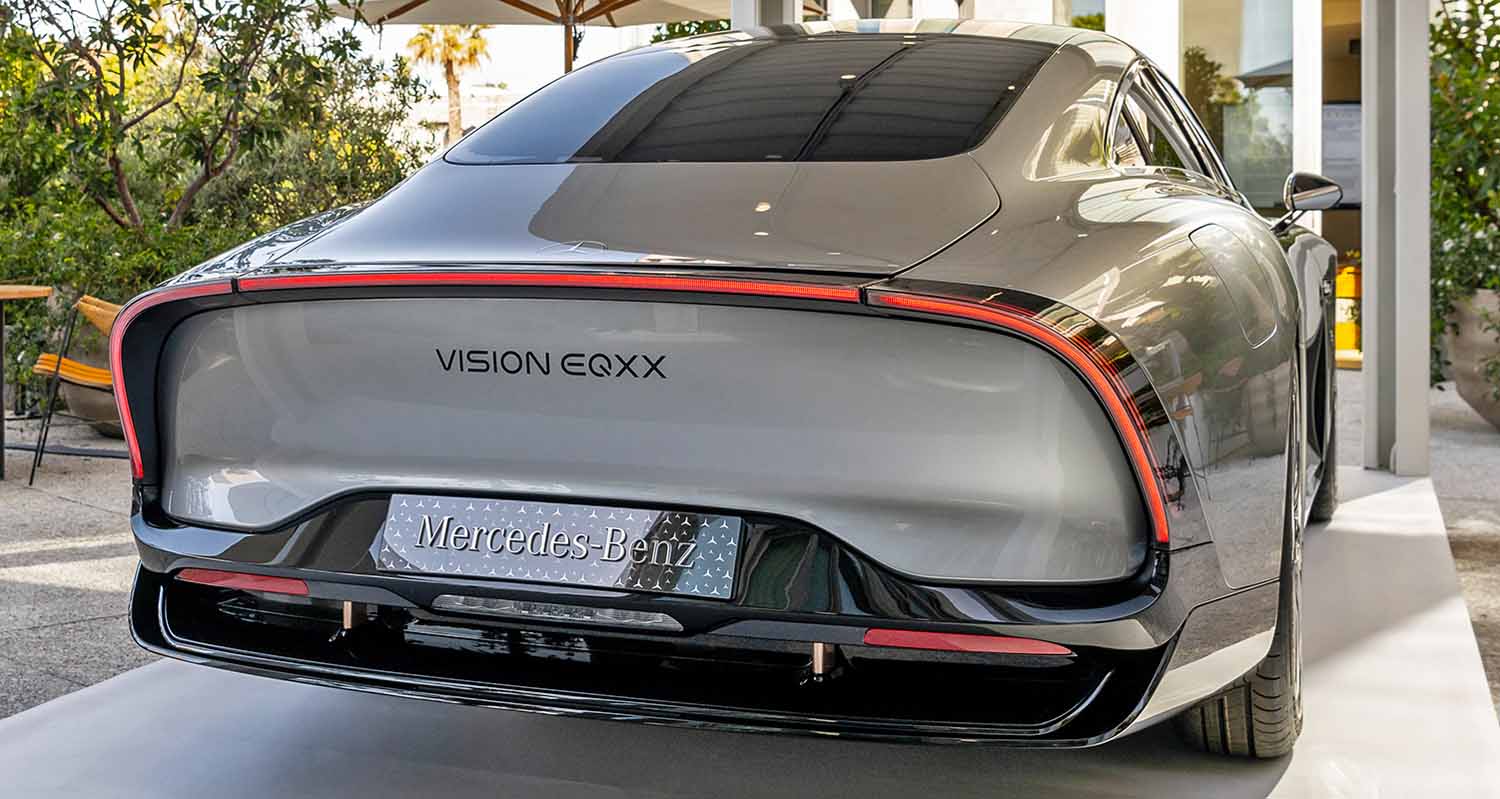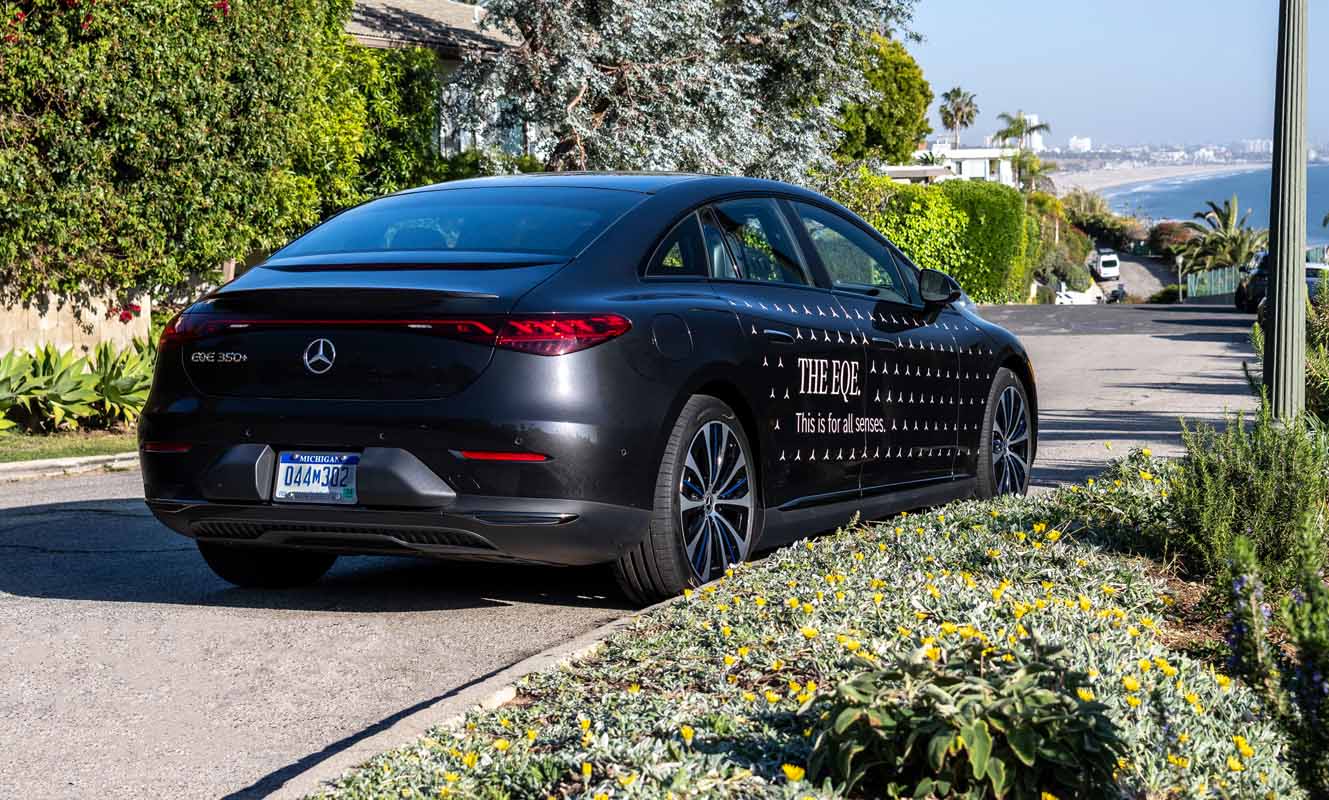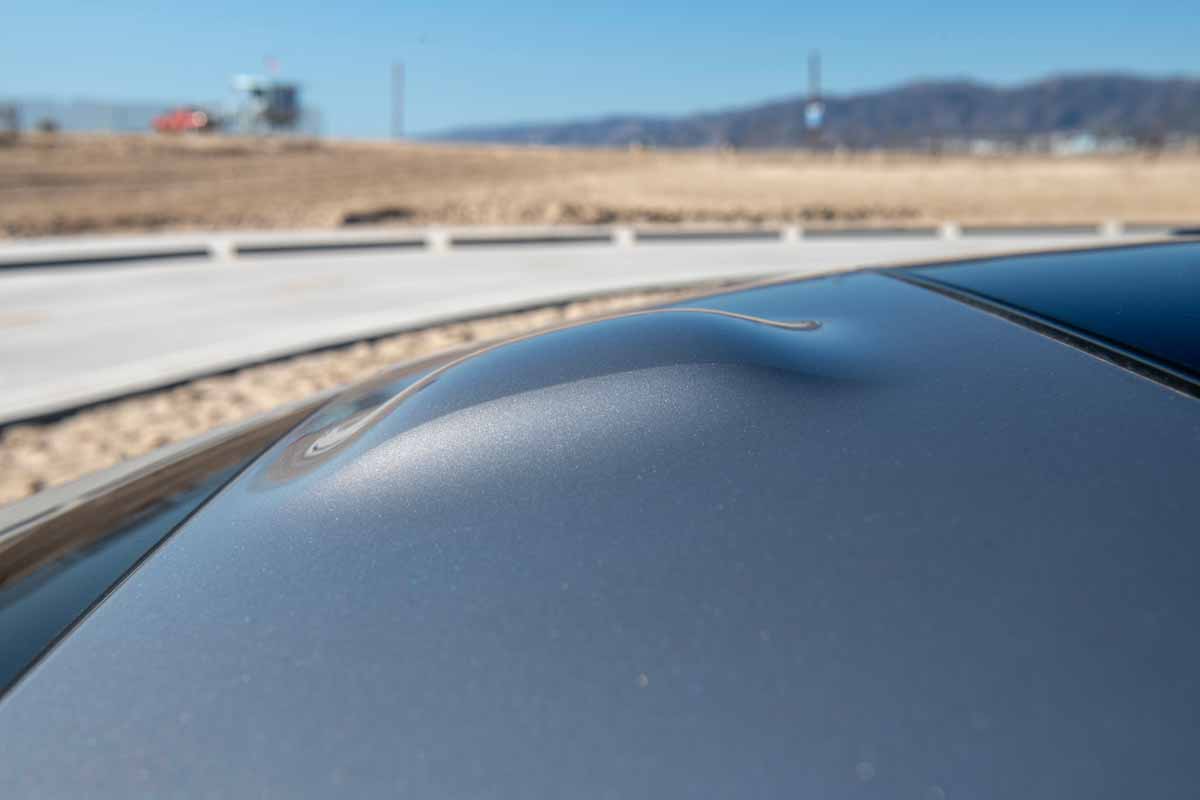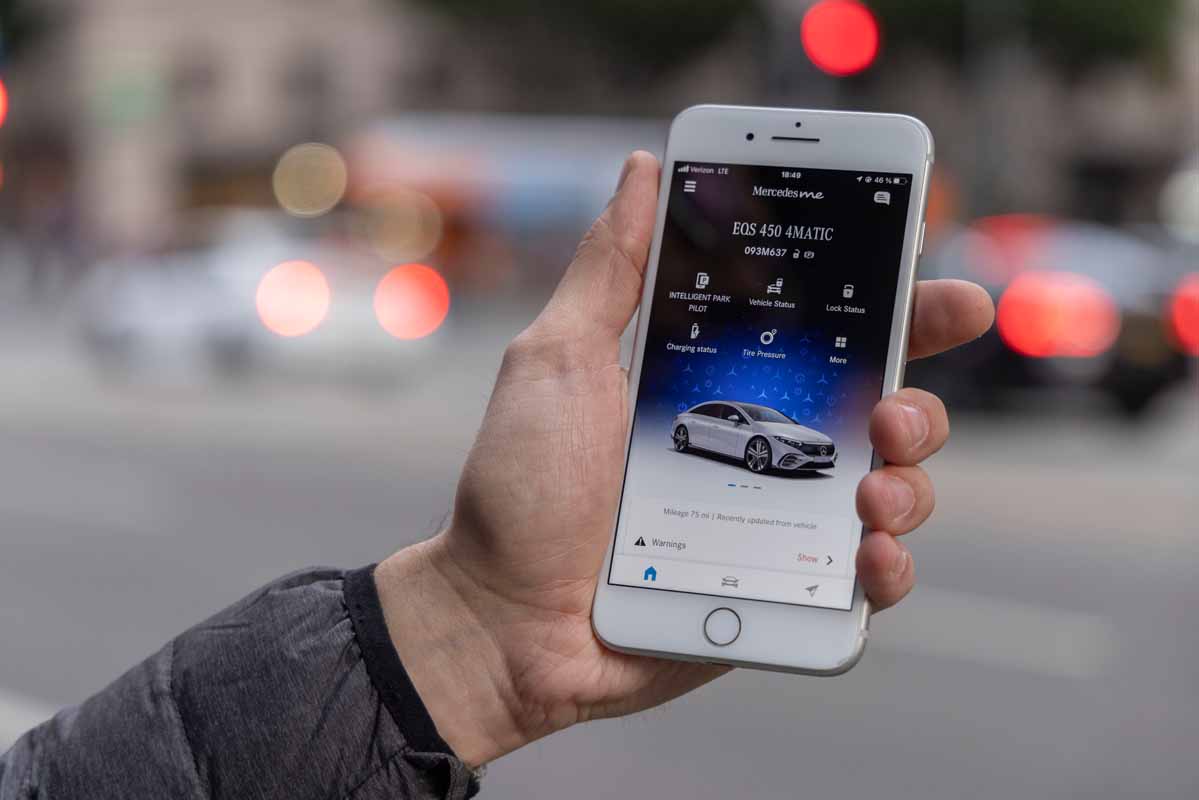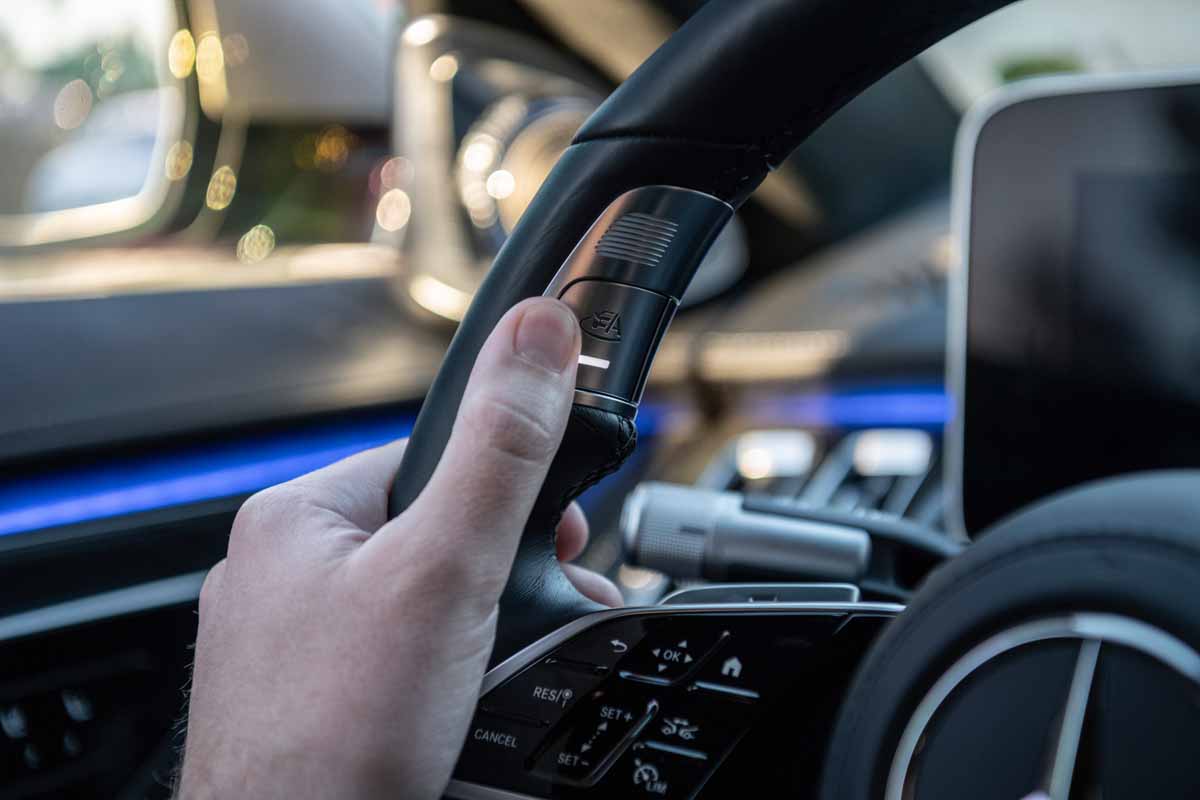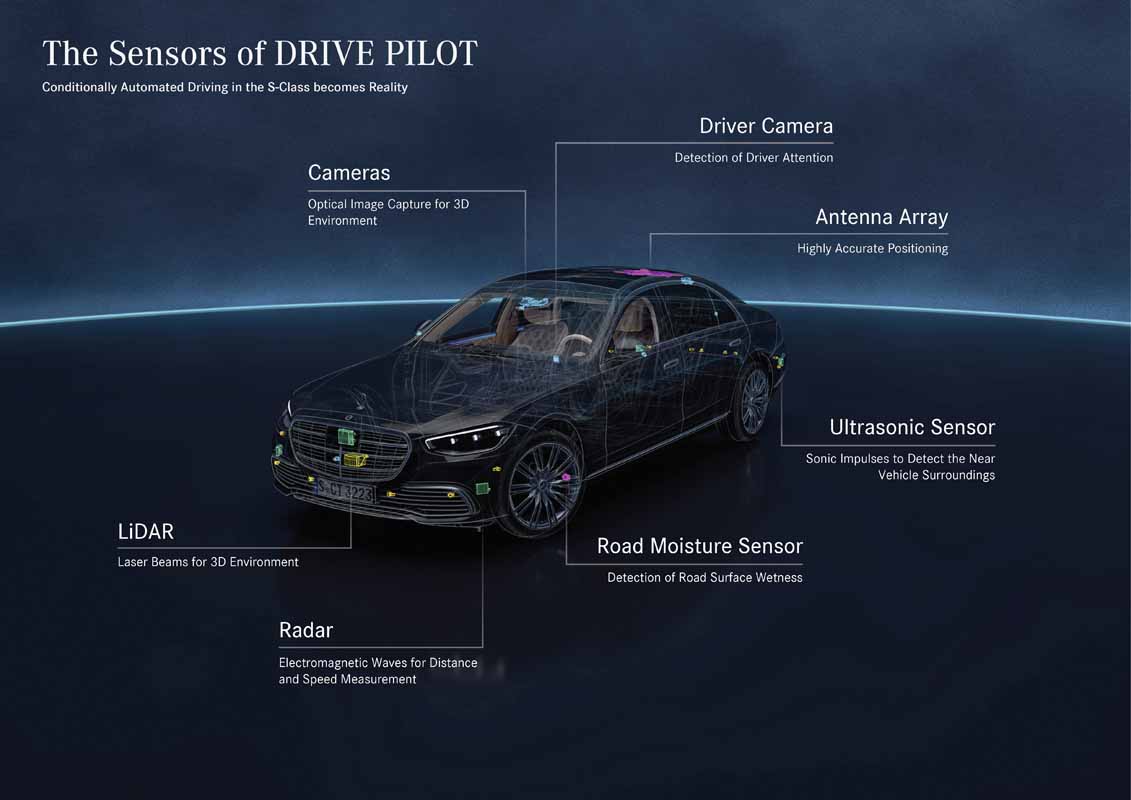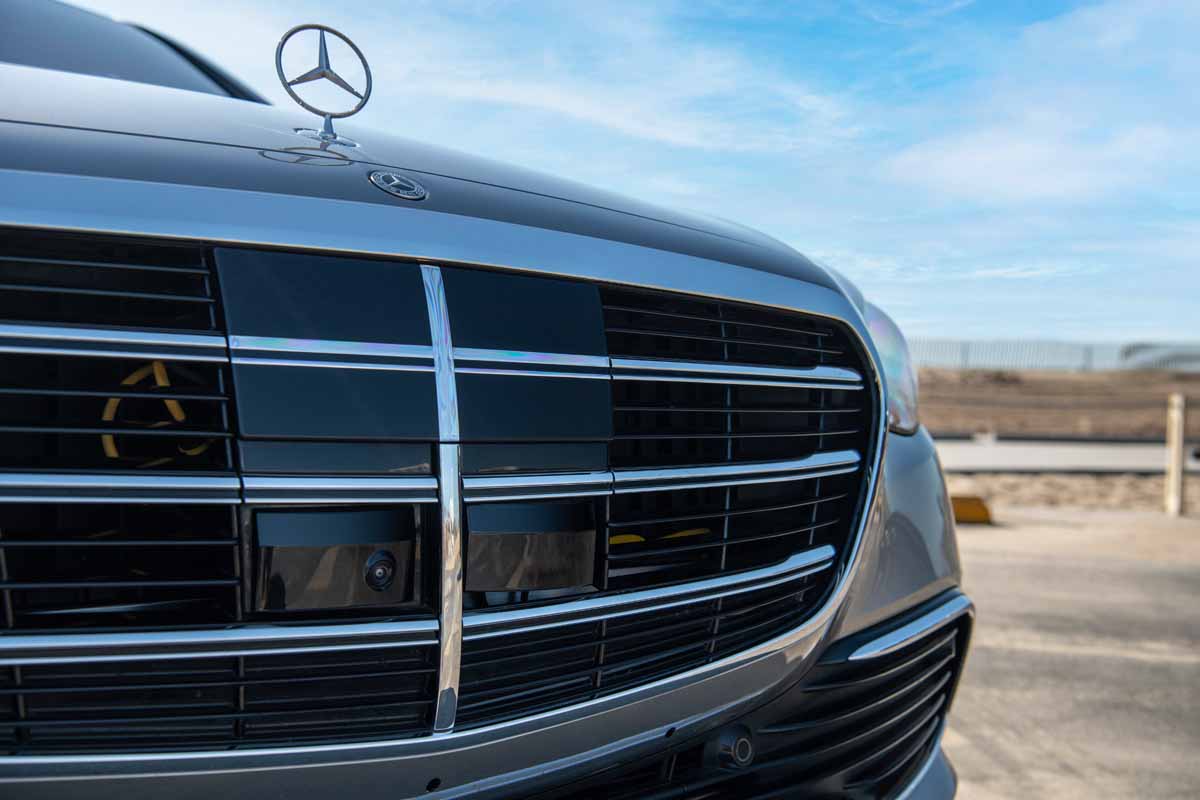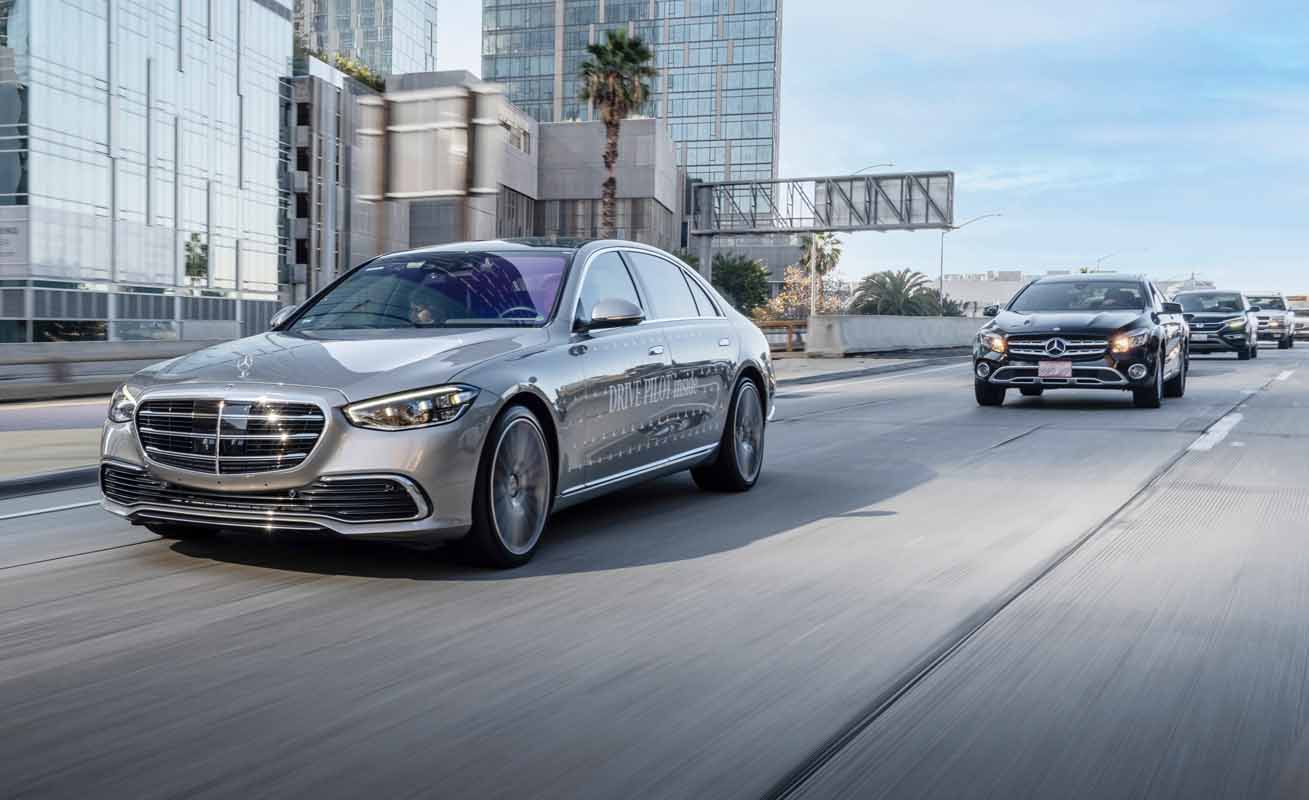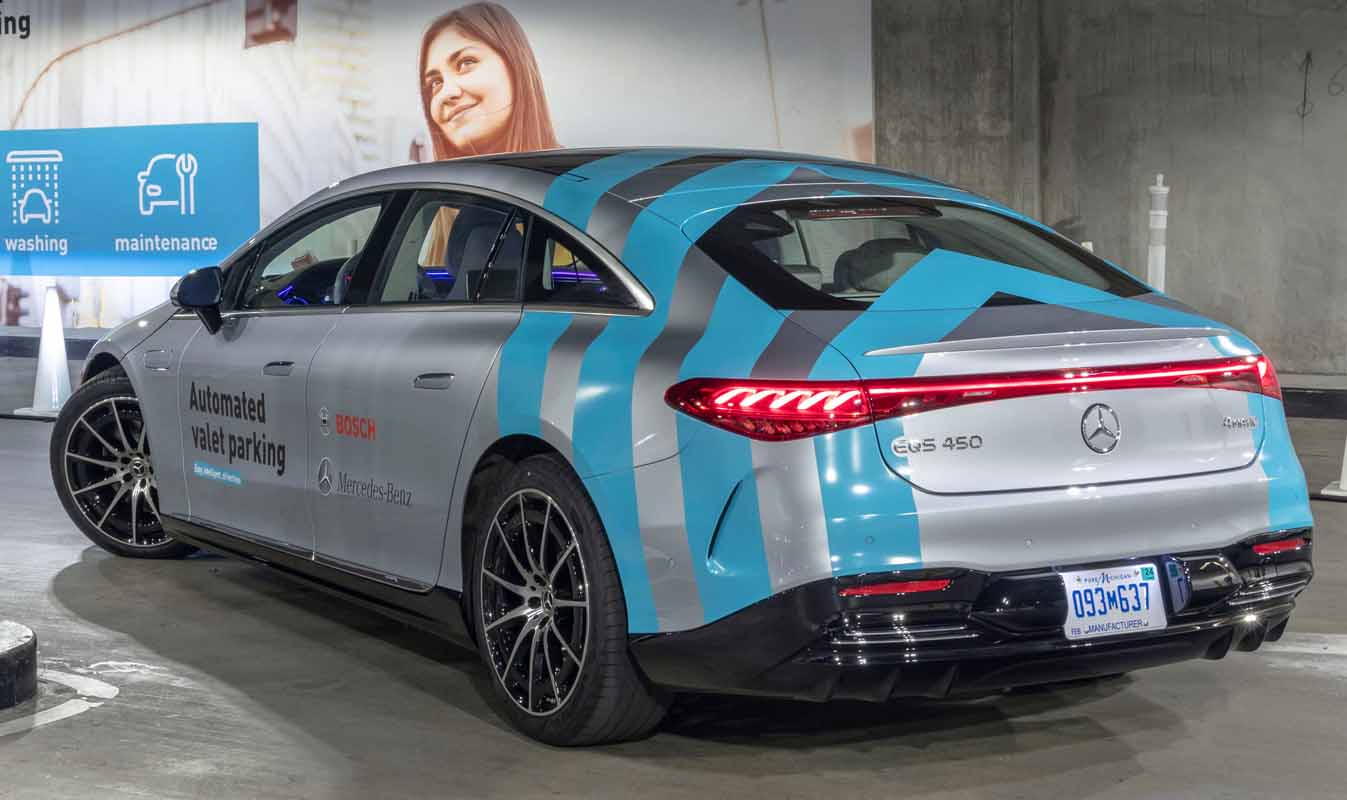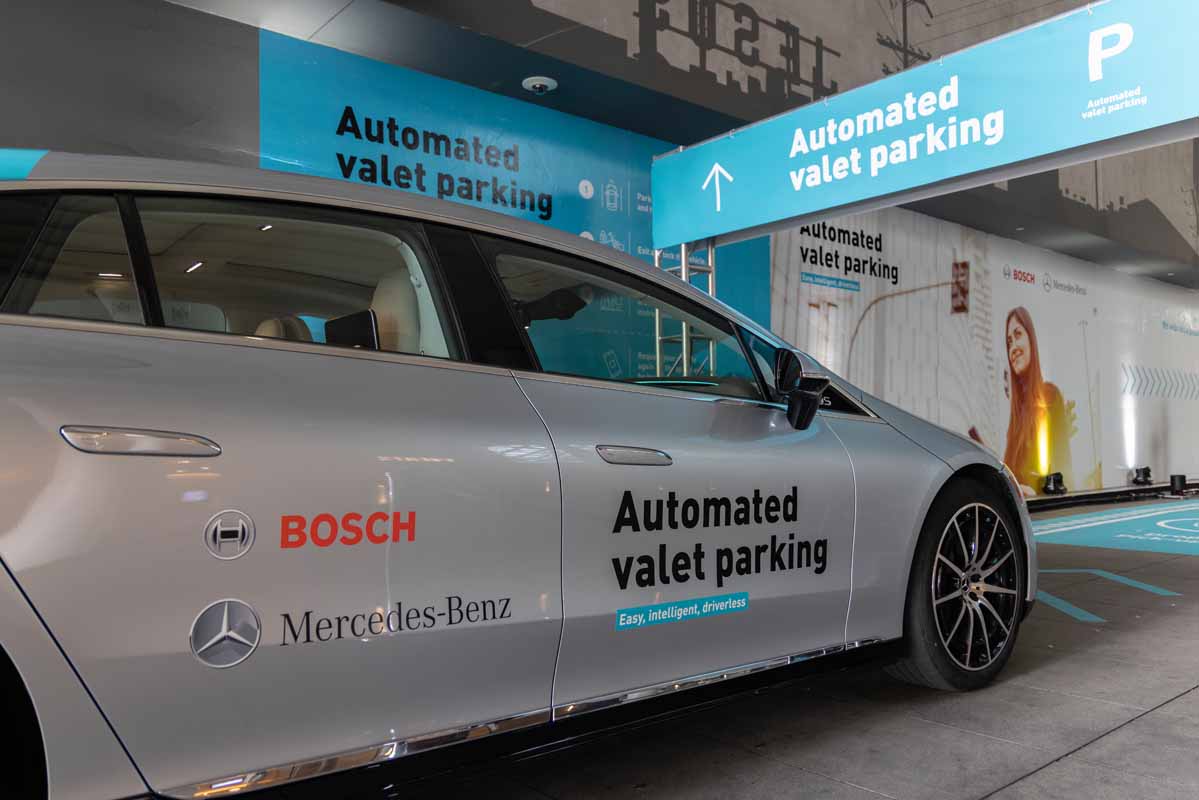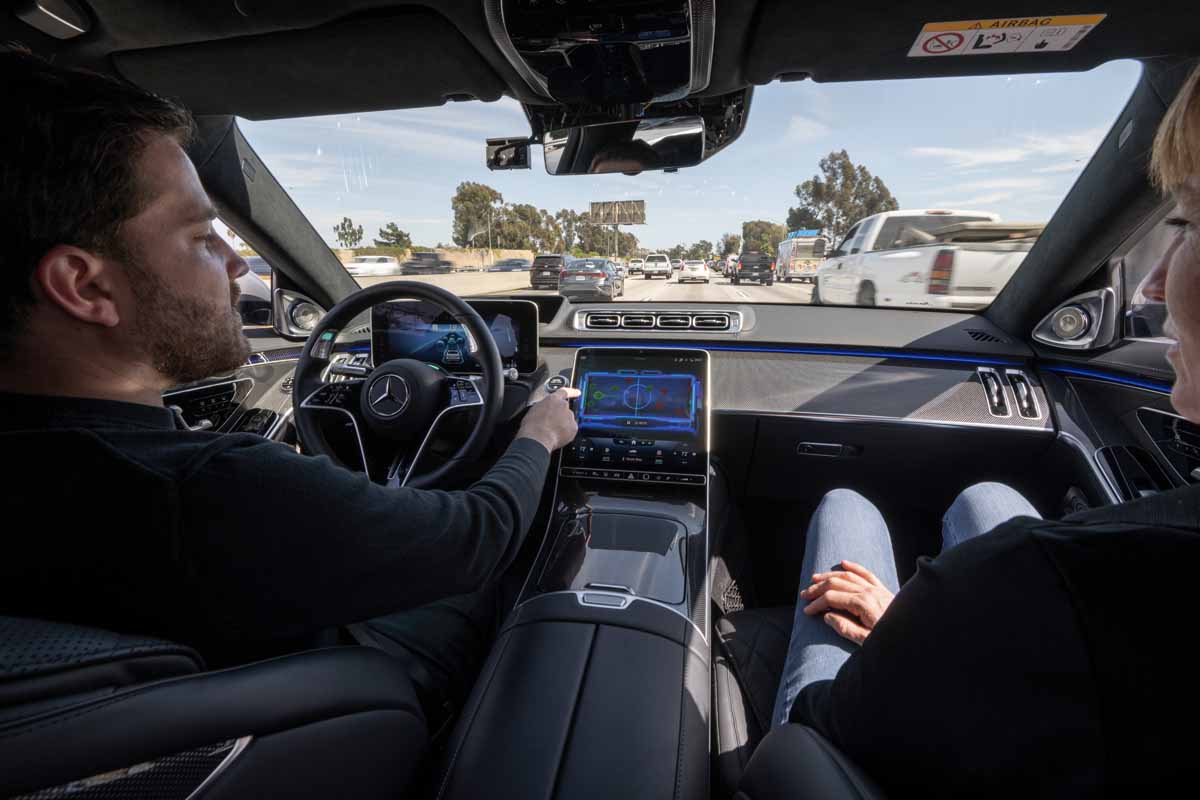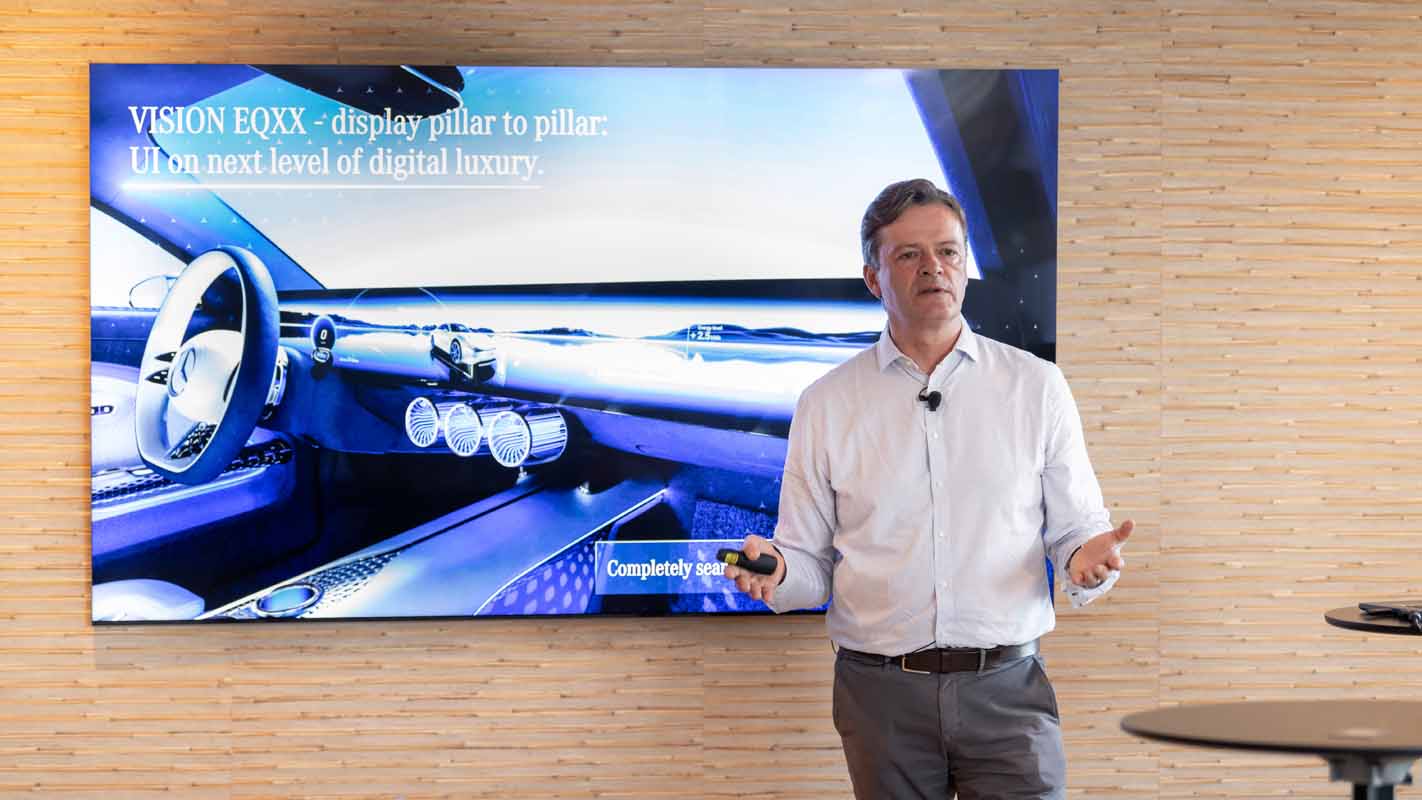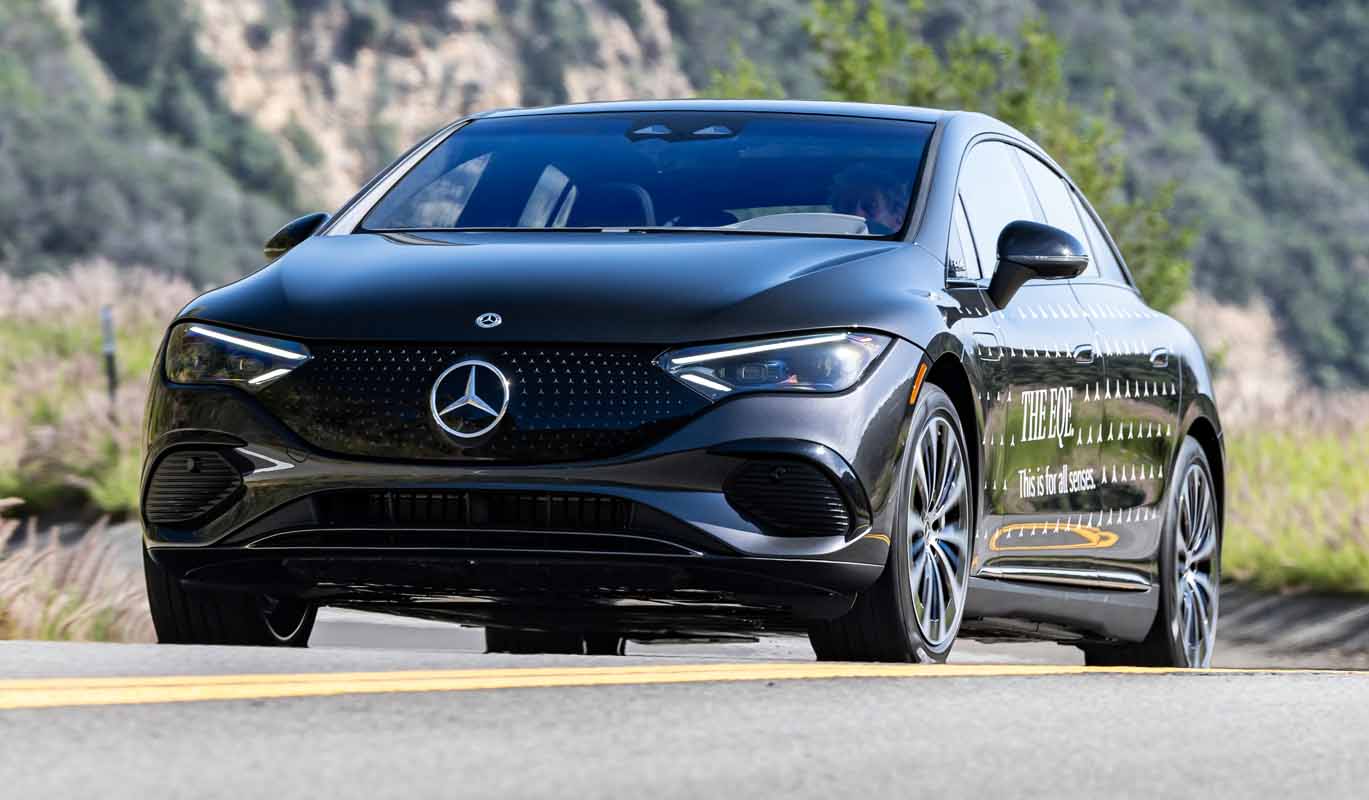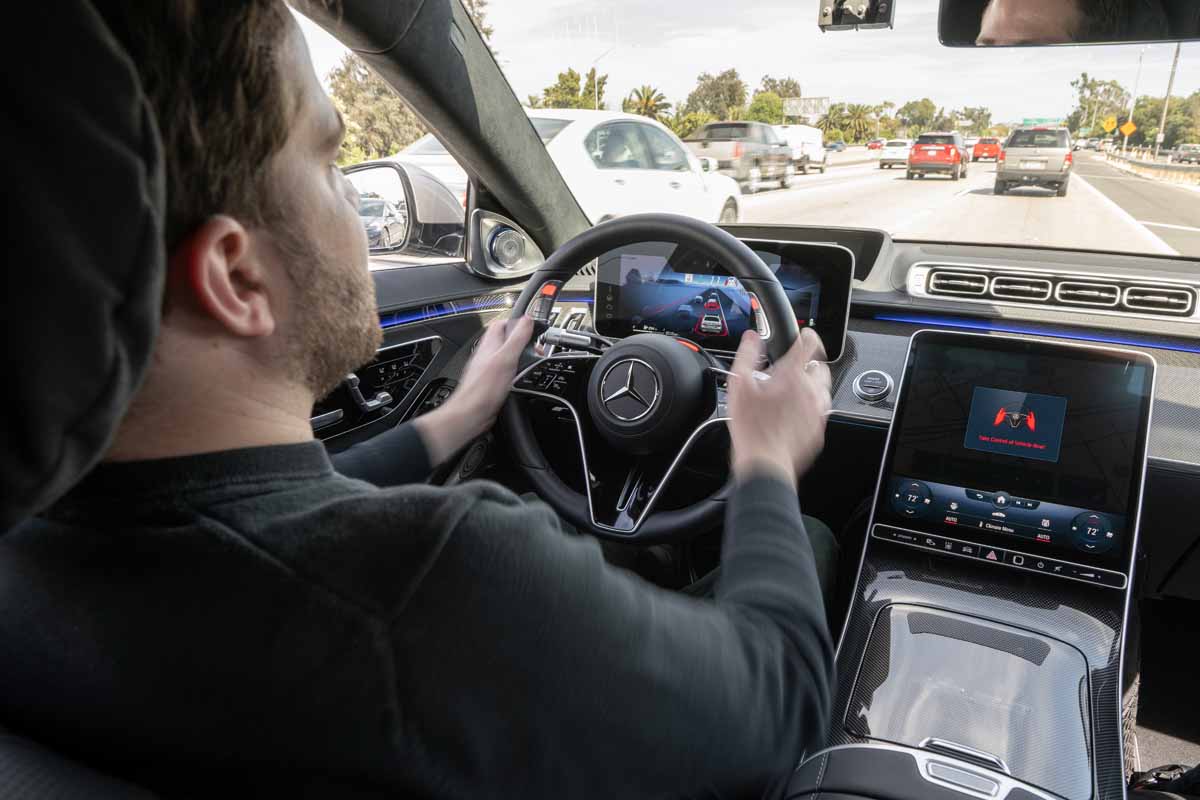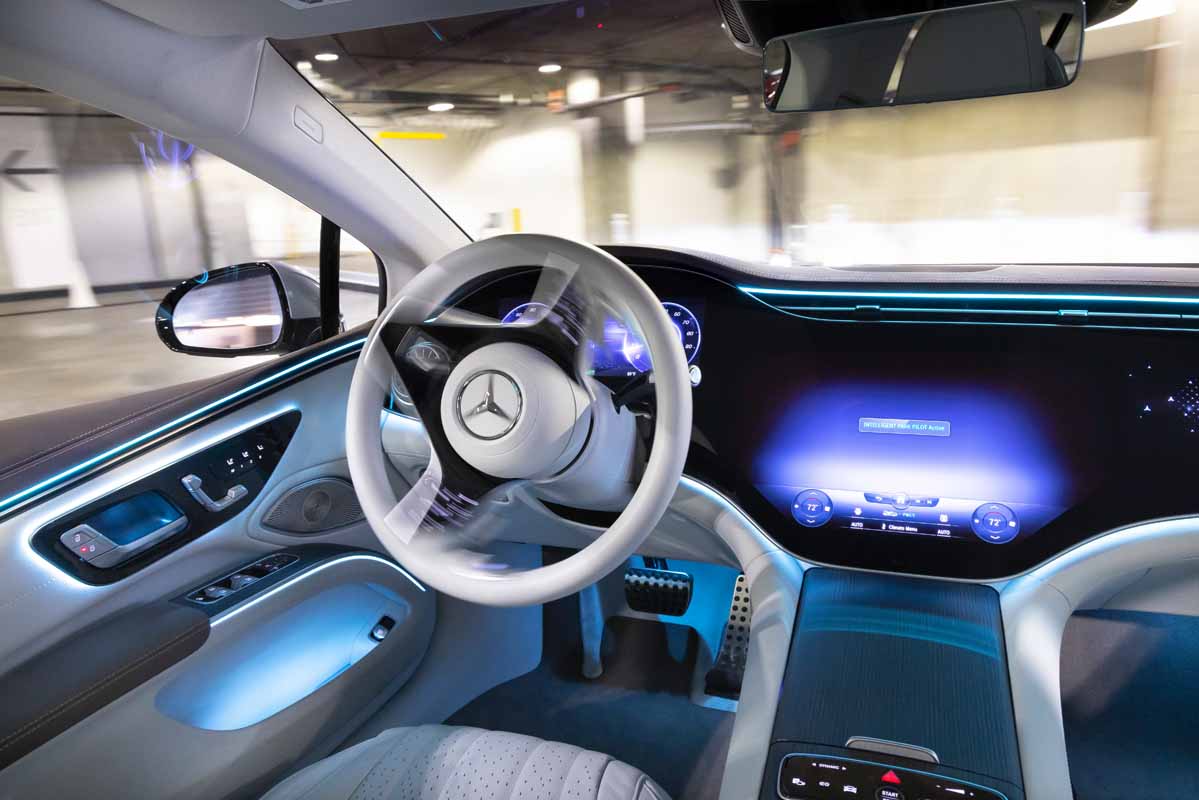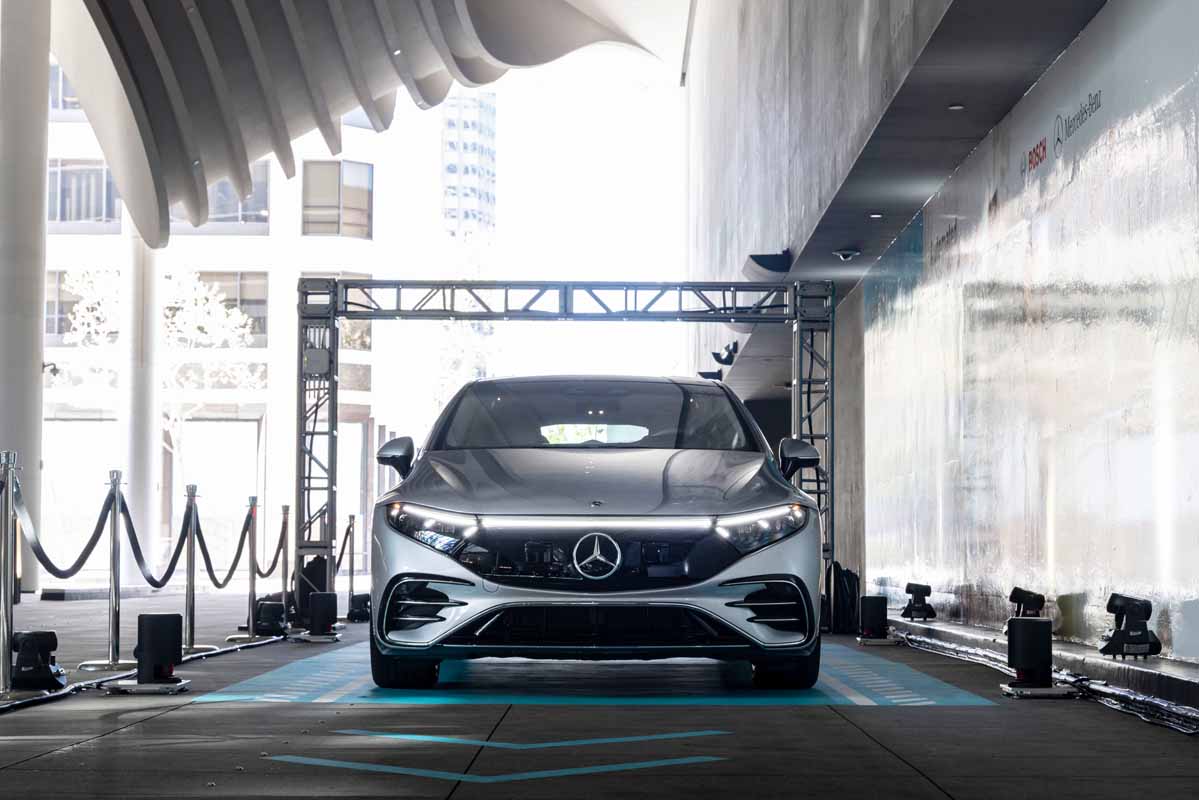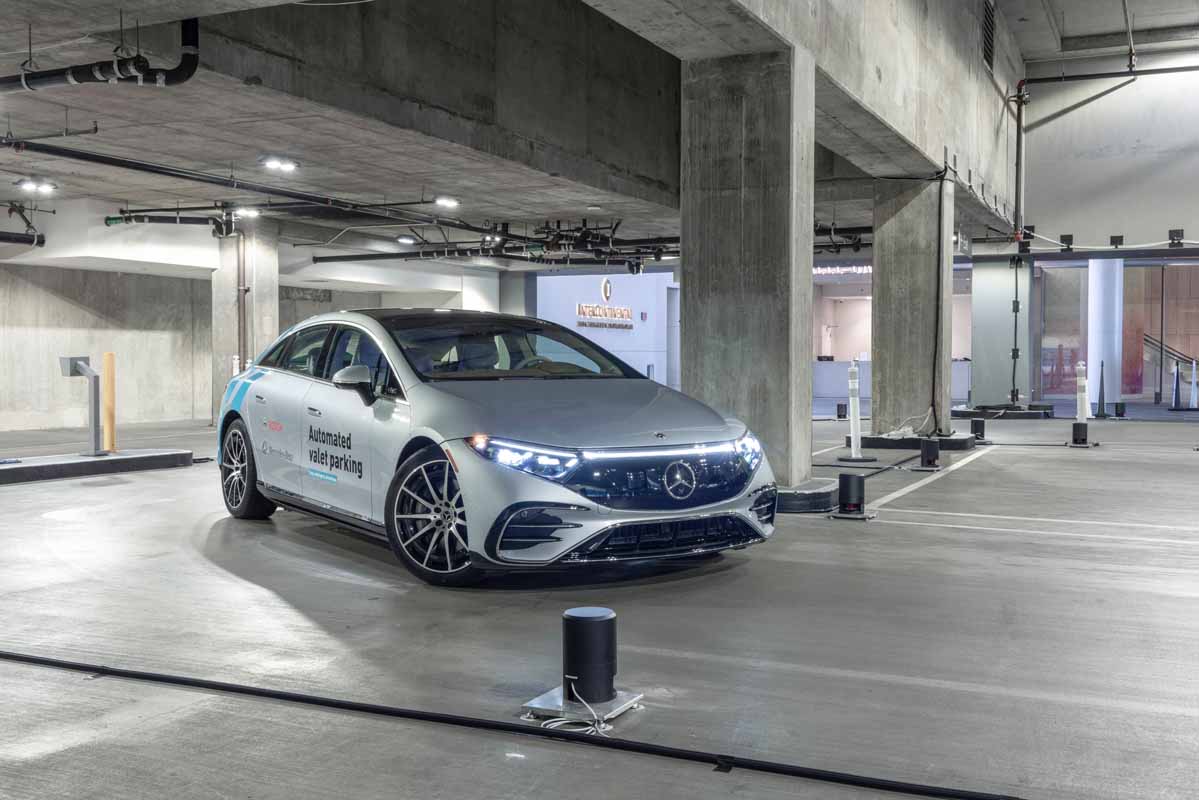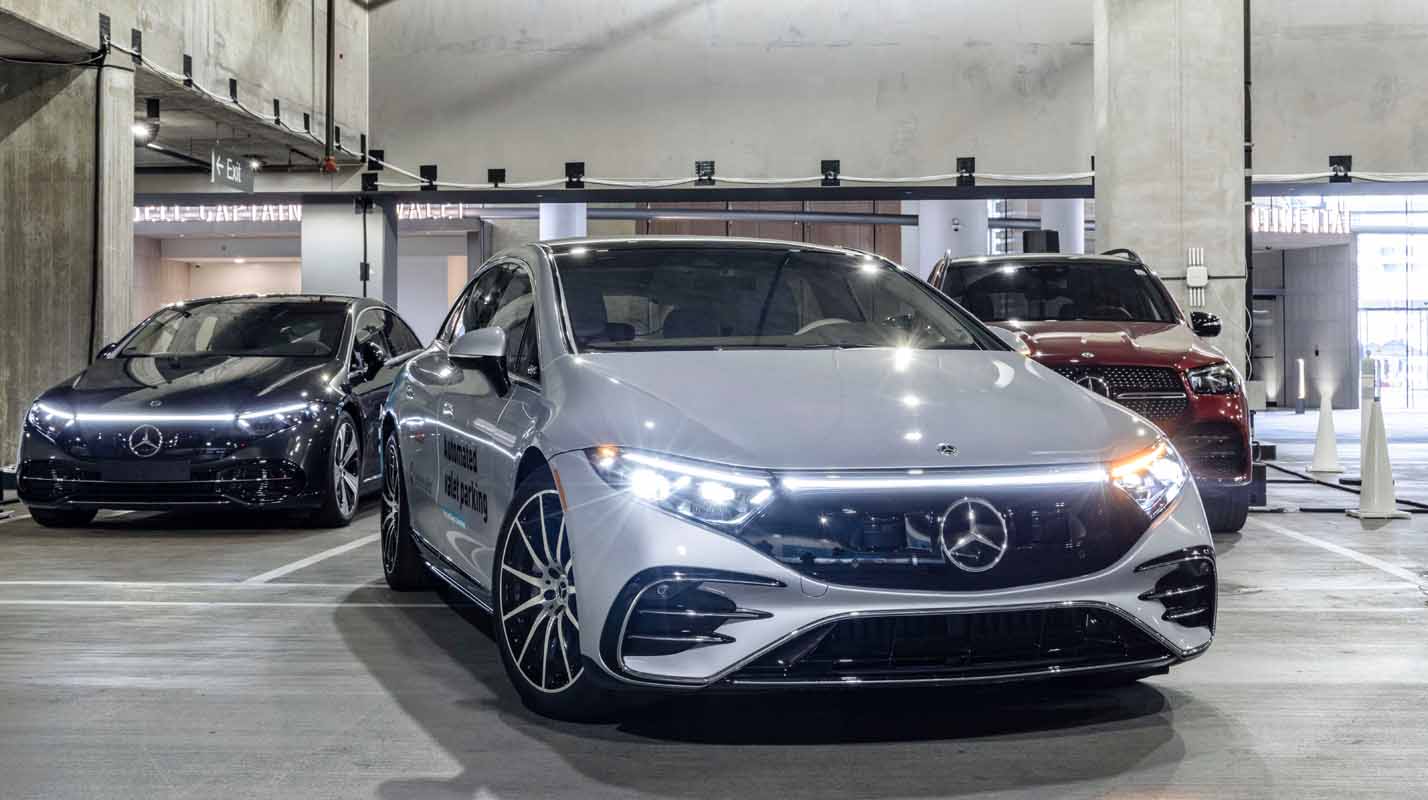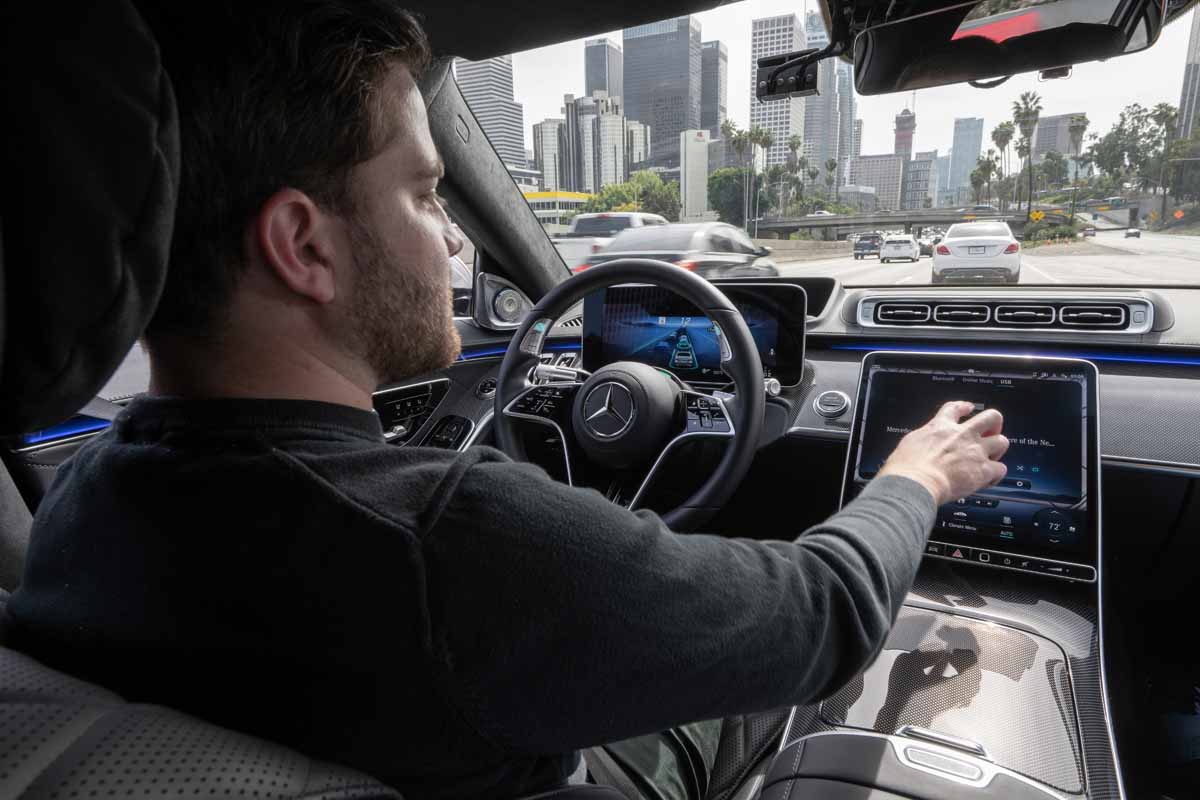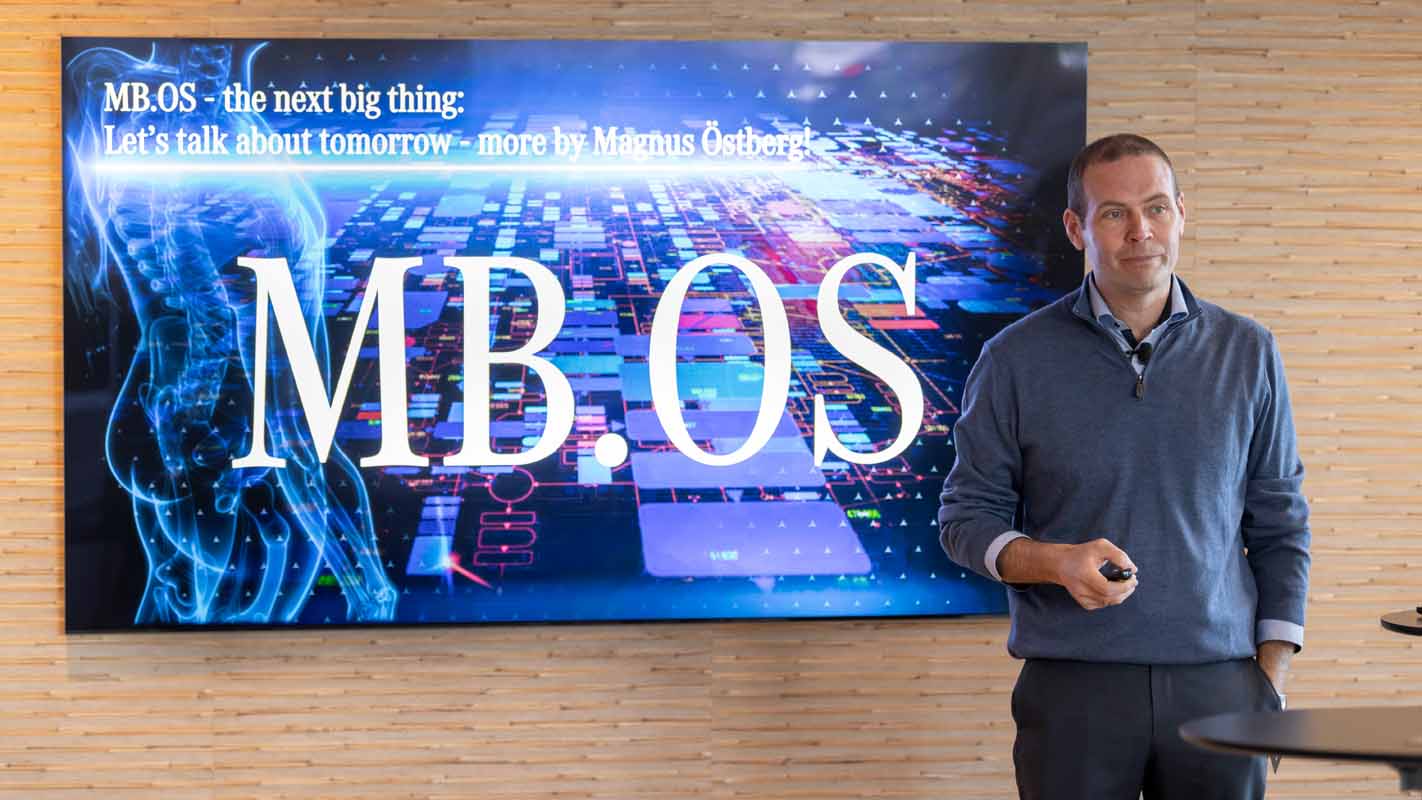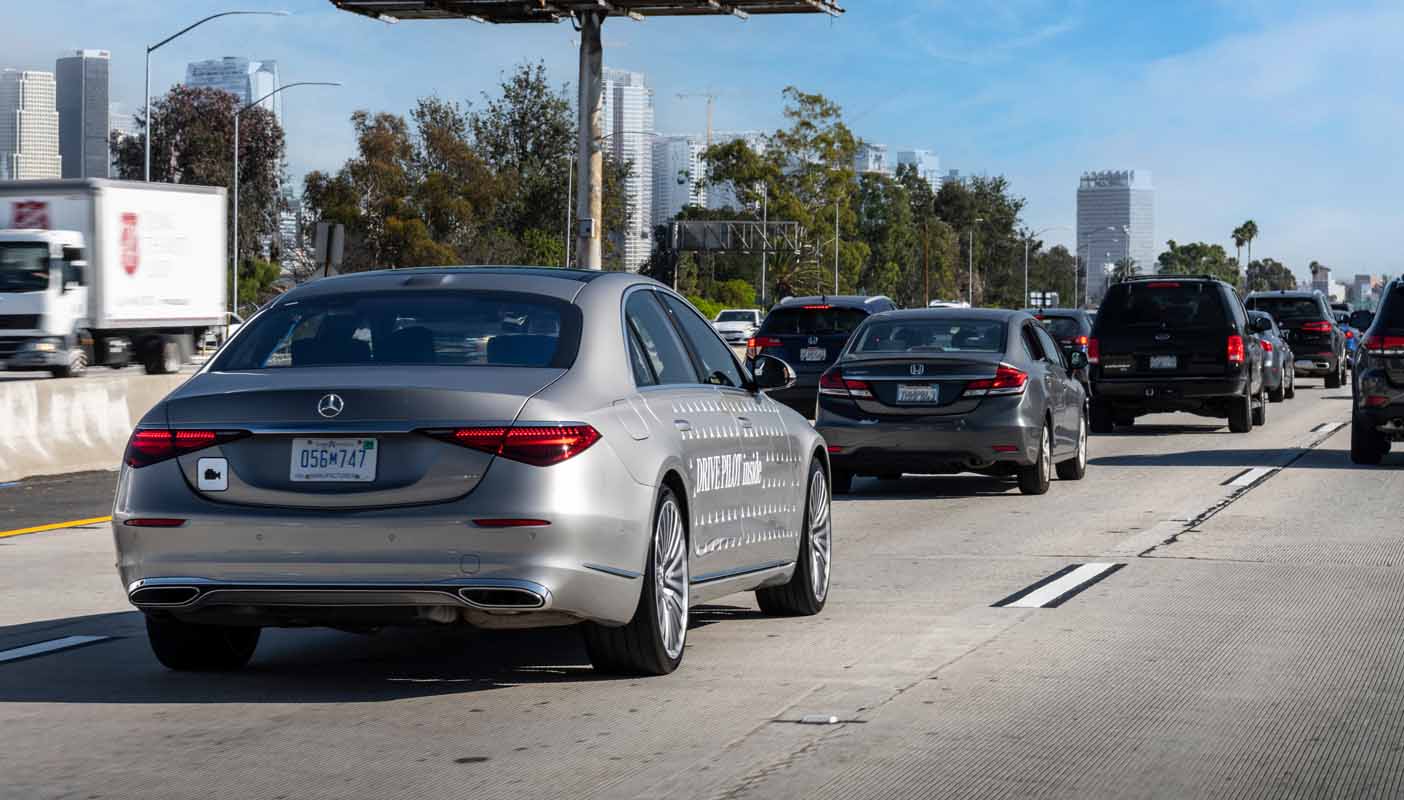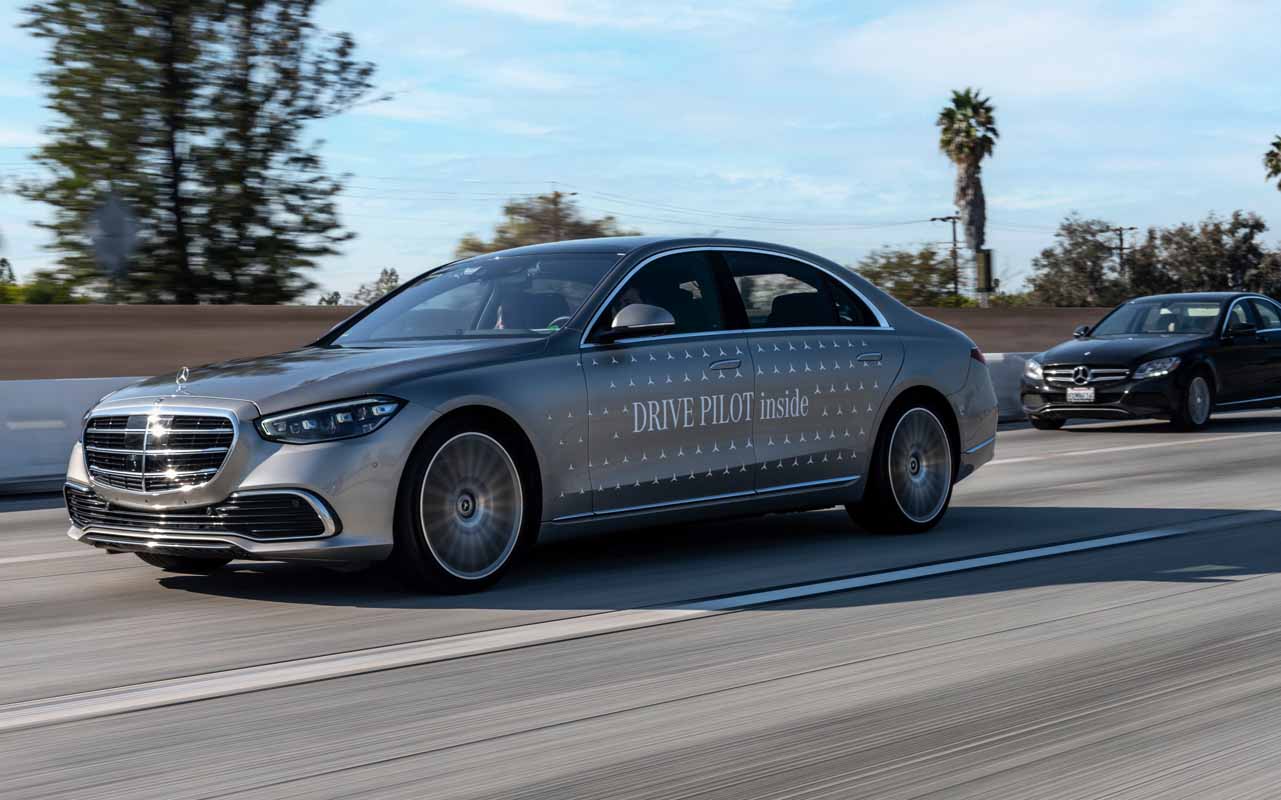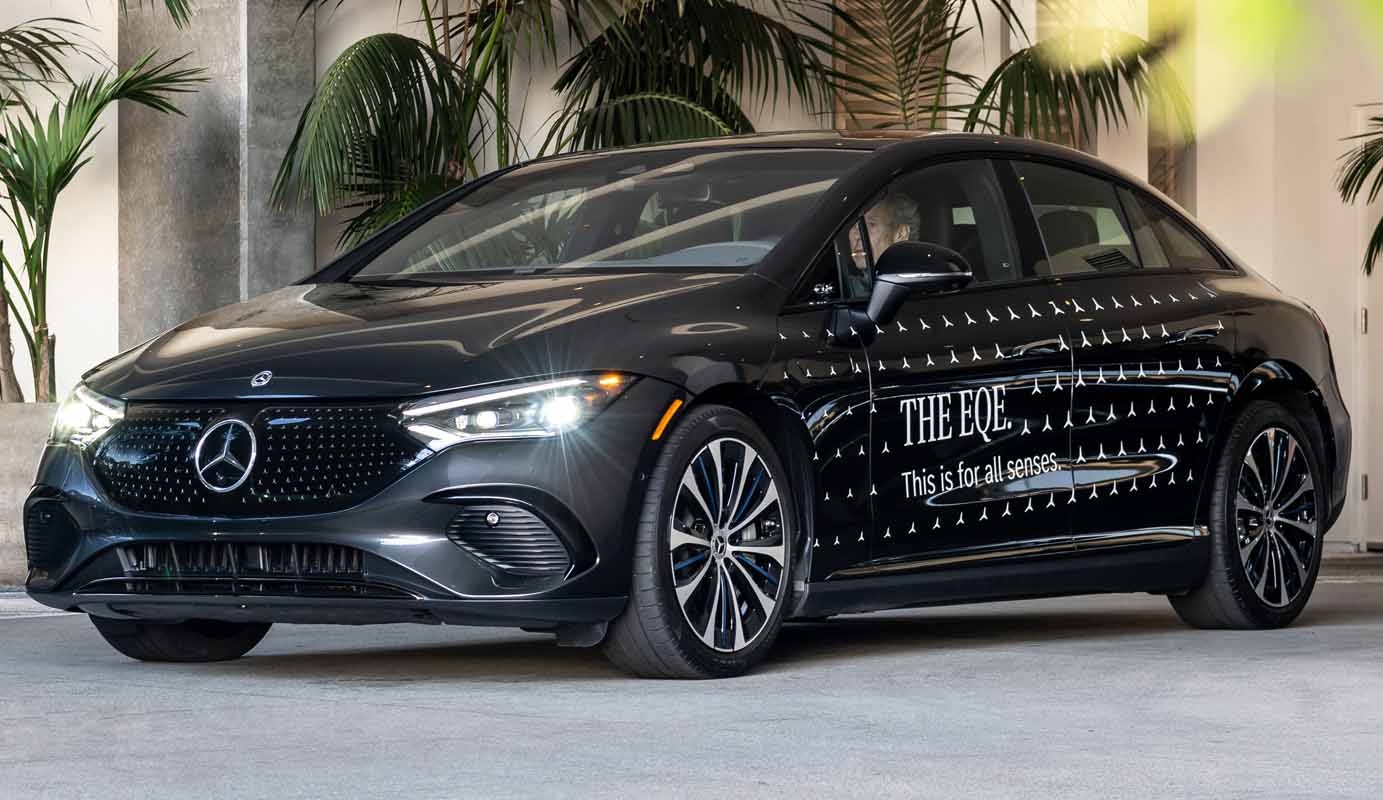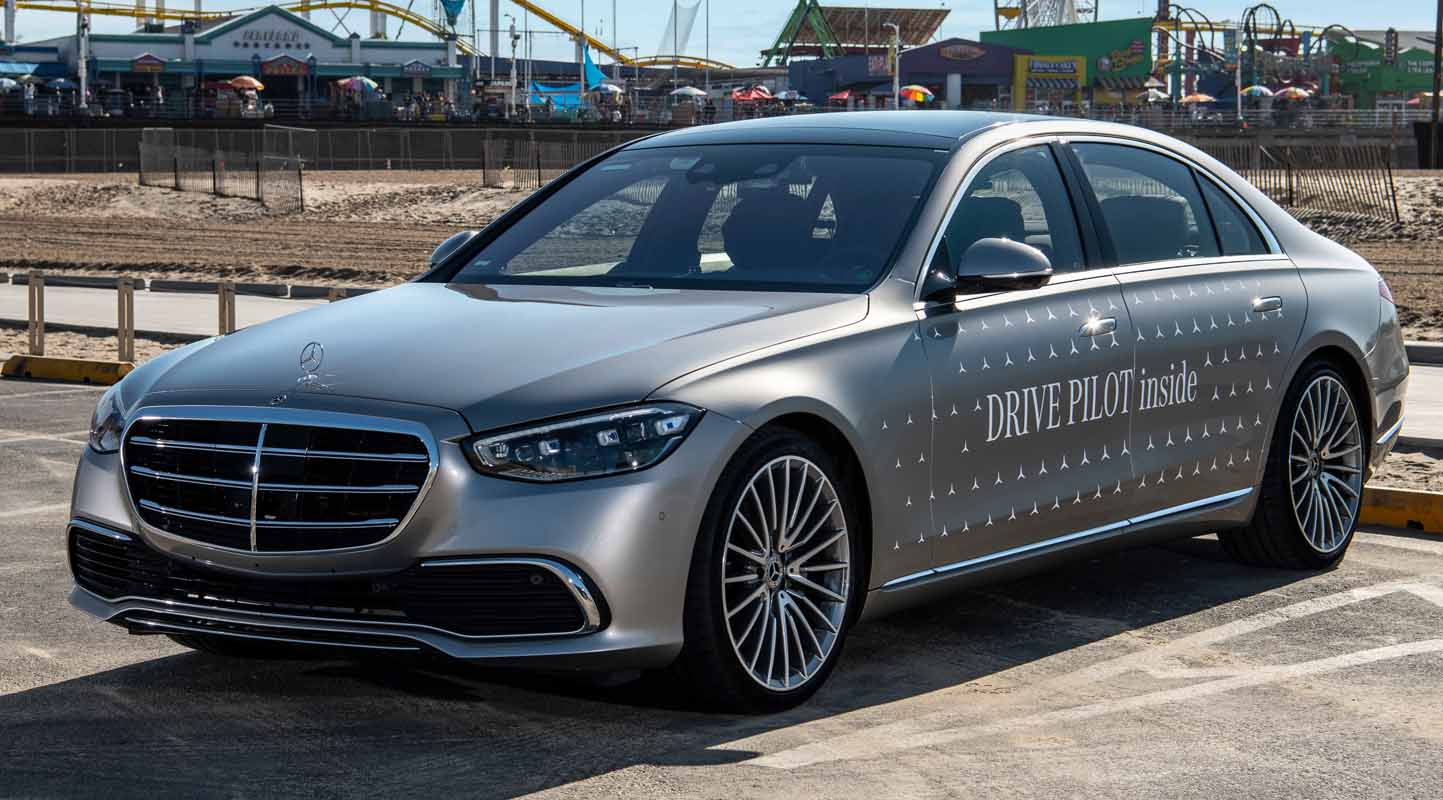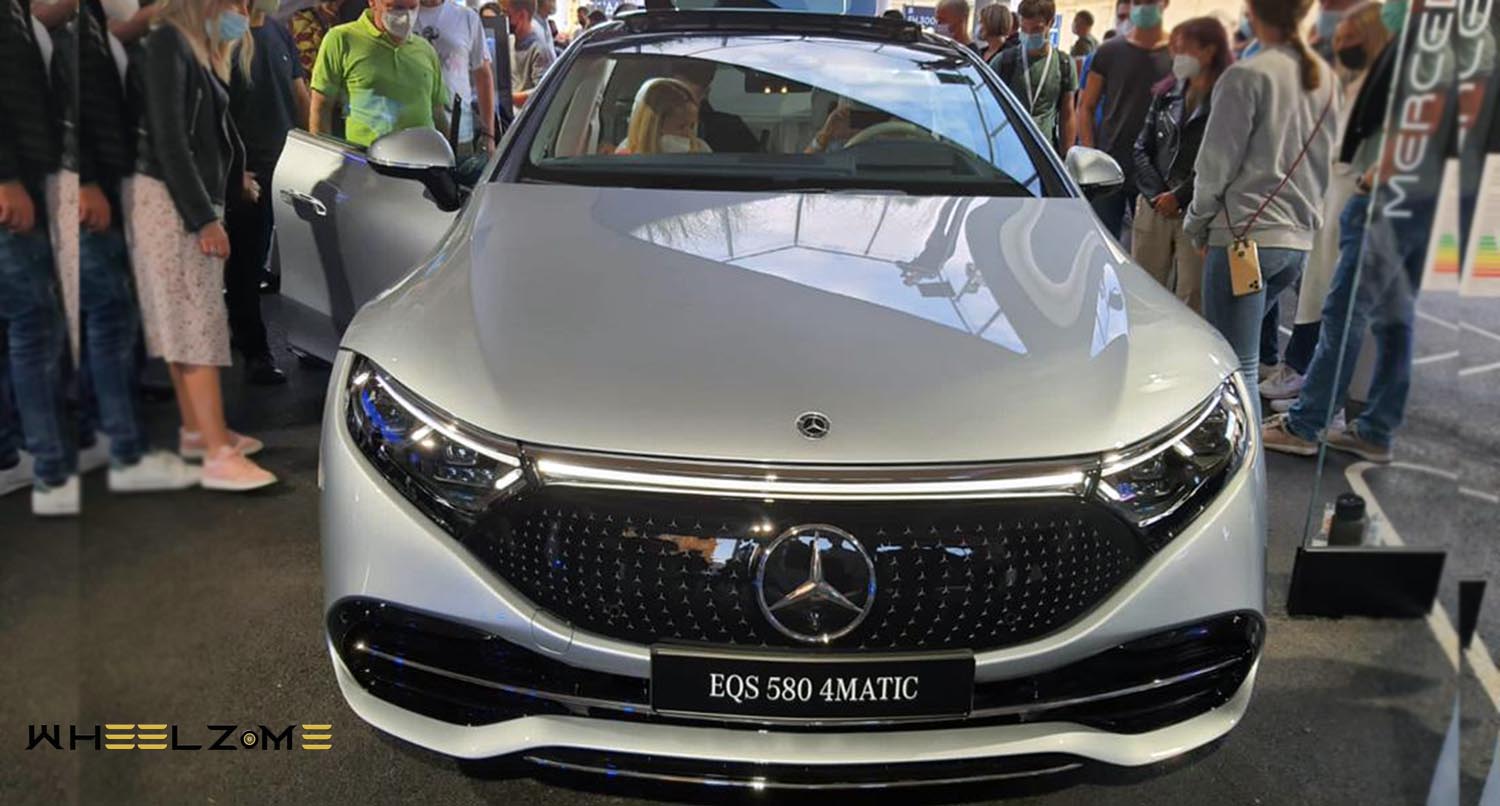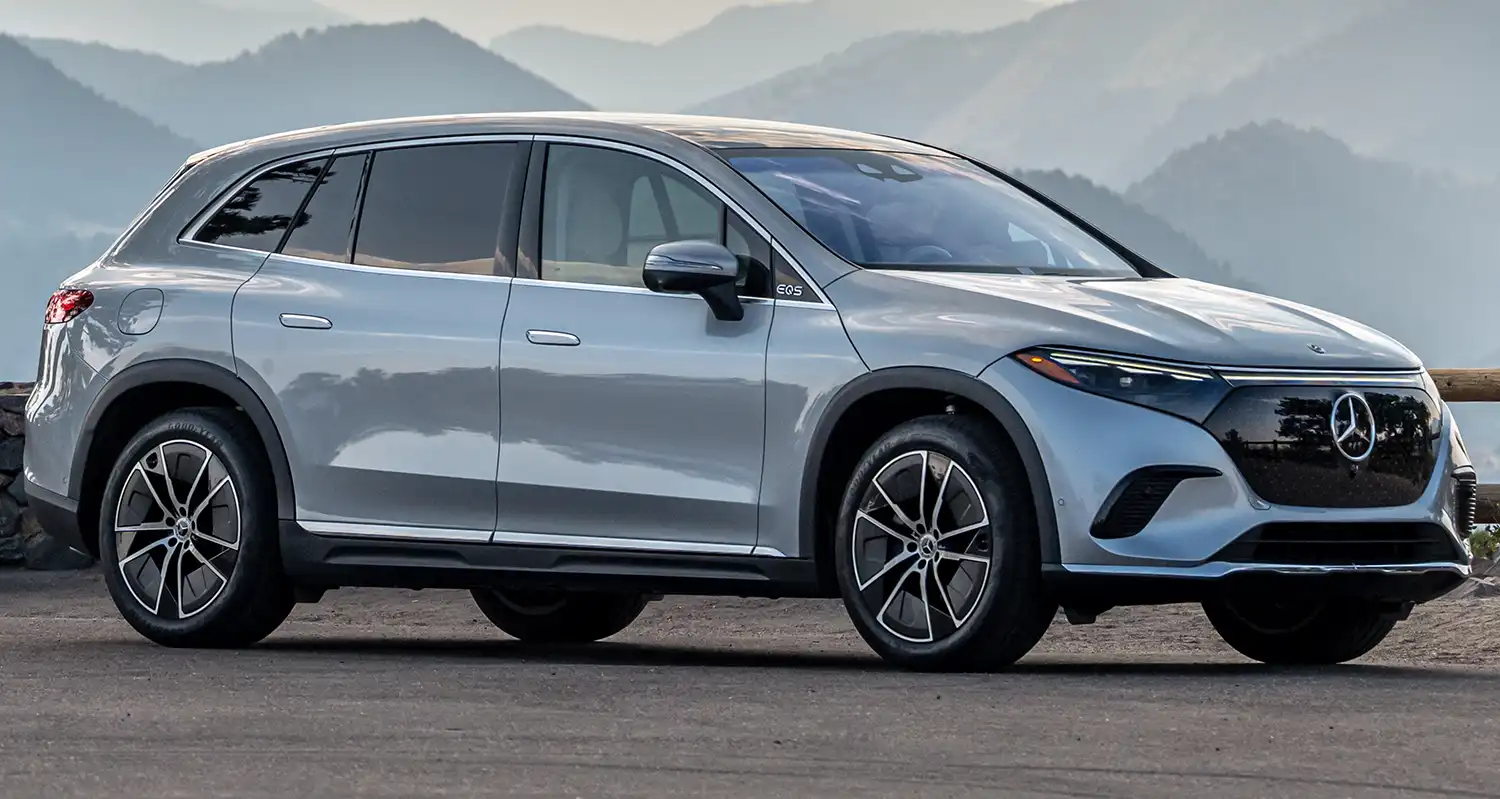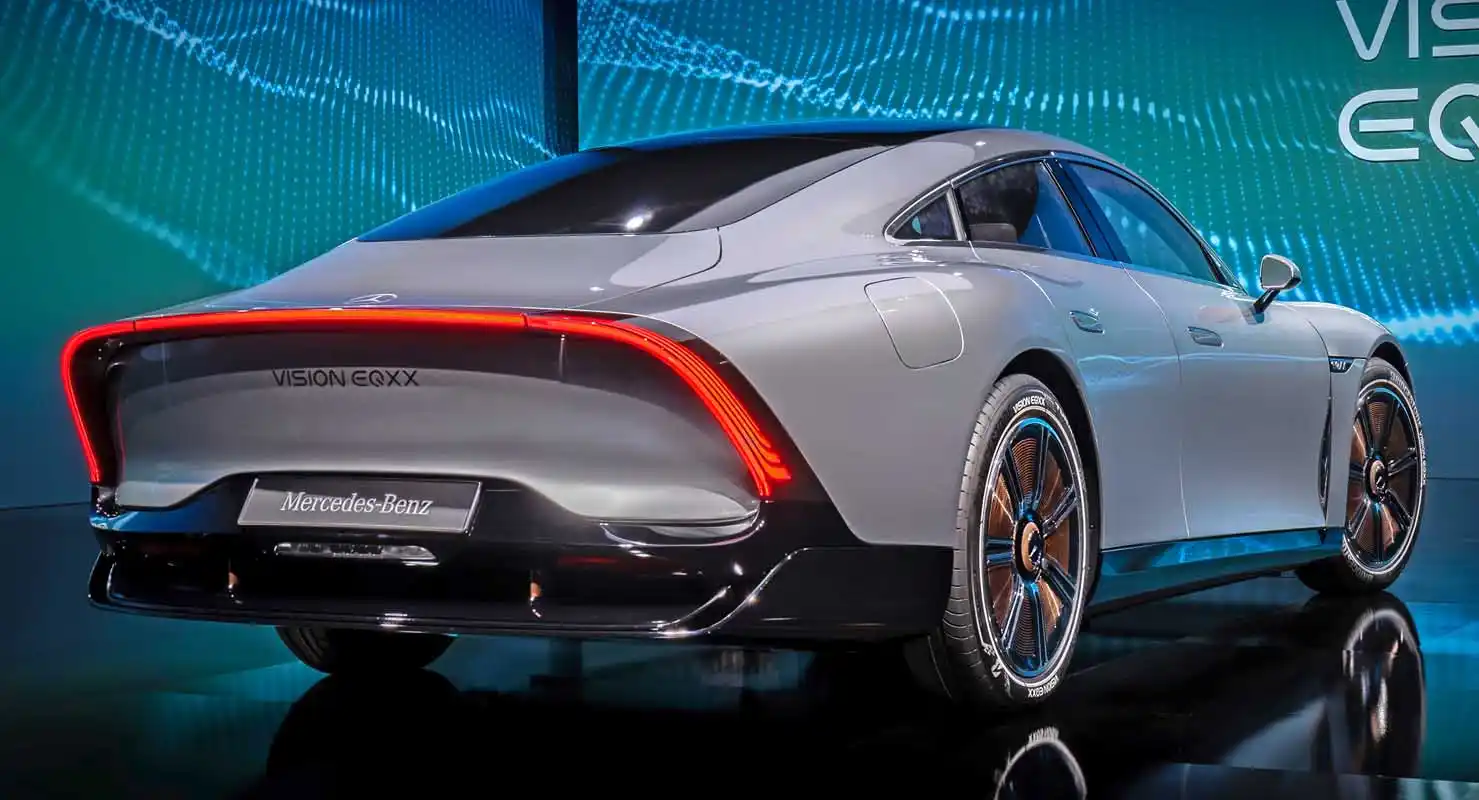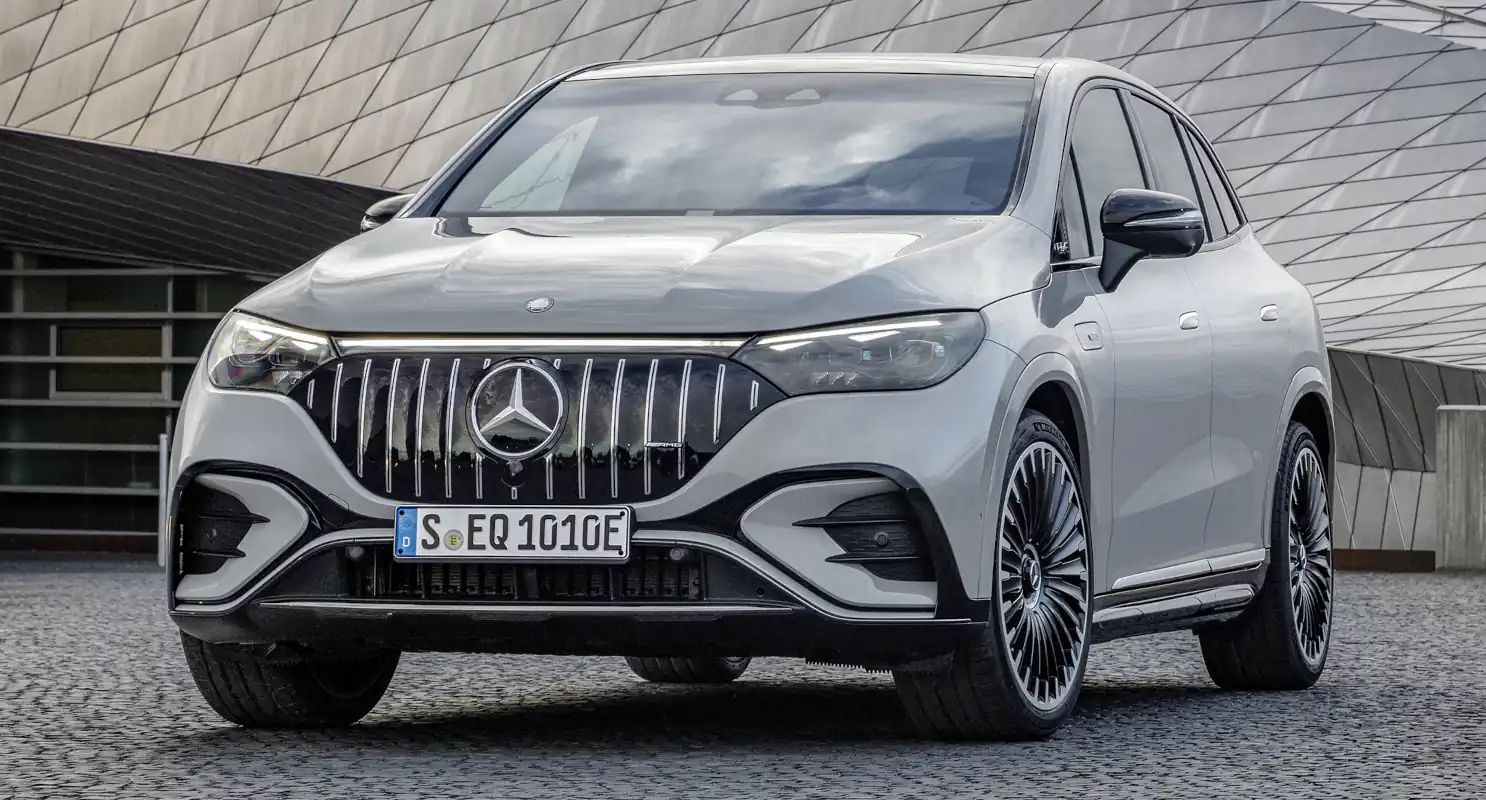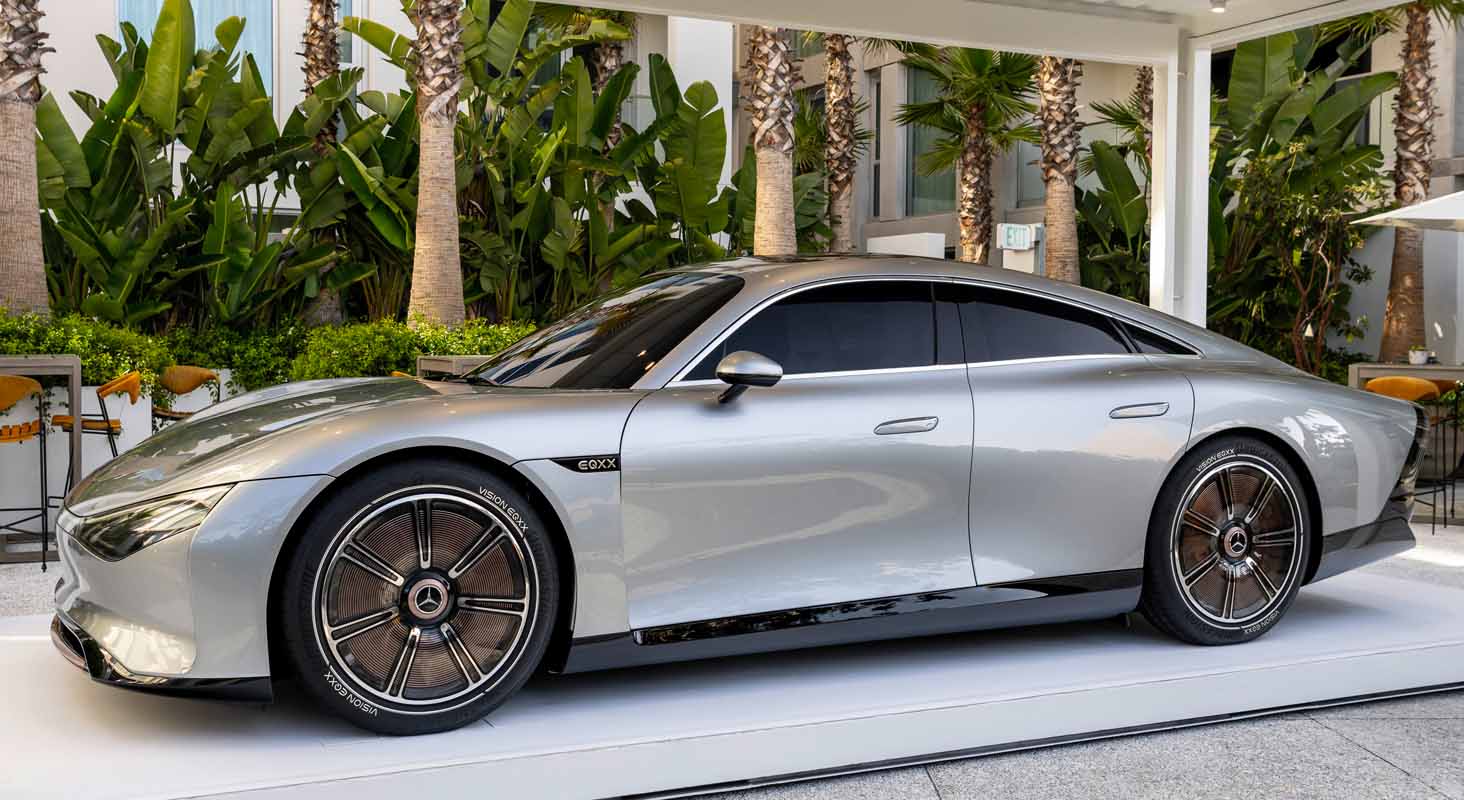
Digital and sustainable innovations will be the number-one USP driving desire in the future of luxurious individual mobility. Customers are increasingly viewing luxury through the lens of values and benefits that extend beyond physical experiences. They are seeking priceless commodities such as time and want to show responsibility with their choices. As the leading luxury car brand, Mercedes-Benz is consistently driving the luxury experience to new levels. This includes giving it new meaning for the electric and digital age – achieving more with less. Driven by the innovative spirit firmly anchored in its brand DNA, and by its strategic goals of “Lead in electric” and “Lead in car software”, Mercedes-Benz is pioneering the electric and digital transformation of the global auto industry. The most recent proof of this is the Mercedes-Benz VISION EQXX. The most efficient Mercedes ever built is a blueprint for the future of efficiency of electric vehicles and also a masterclass in a radically new approach to the UI/UX driven by software and artificial intelligence. With DRIVE PILOT, Mercedes-Benz became the first automotive manufacturer in the world to receive the world’s first internationally valid system approval for conditionally automated driving (SAE-Level 3).
“Through its state-of-the-art EV portfolio and architecture, Mercedes-Benz already holds a commanding position in the mobility transformation. Our strategy is underpinned by nurturing key elements of the electric drivetrain and the software in-house. With our VISION EQXX, we are demonstrating that efficiency is a core component of luxury – now and in the future. Efficiency is the new currency, not just in the drivetrain but throughout the entire car. Through efficiency, we achieve more from less – and that includes sustainable luxury that is both digital and physical. With DRIVE PILOT, our Level 3 conditionally automated driving system, our customers gain the most valuable asset – time. In a first step, we are offering this world-leading technology to our customers in Germany, but will be rolling it out in the US as well by the end of this year if the legal and regulatory framework allows,” says Markus Schäfer, Member of the Board of Management of Mercedes-Benz Group AG, Chief Technology Officer responsible for Development and Procurement.
“Software is changing the world. At Mercedes-Benz, we are unleashing the potential of software to create true added value for our customers. That means focusing on those innovations that offer them true digital luxury through the gift of time. The success factor is the integration of software innovations with intelligently designed electronic hardware, underpinned by our new operating system, MB.OS. Developed increasingly in-house, this high-performance, long-lasting, energy-efficient architecture will facilitate a step change in the customer experience and development processes,” says Magnus Östberg, Chief Software Officer, Mercedes‑Benz AG.
VISION EQXX – the future of efficiency
The road trip to electric mobility is well underway. Mercedes-Benz has already garnered many life-changing experiences and passed numerous milestones along the way. The VISION EQXX research prototype is a vehicle designed specifically for this transformative journey. Not only does it demonstrate the potential of electric mobility for the digital and sustainable age, it also reinterprets the very essence of the road trip itself. It delivers the freedom of the open road and satisfies the urge to explore in a way that is in tune with nature.
With more than 620 miles[1] (1,000 km) of real-world electric range on a single charge and energy consumption of less than 10 kWh/100 km, the VISION EQXX is a blueprint for the future of efficiency. Beyond the exceptional achievements of its highly advanced drivetrain, world-beating drag coefficient of 0.17 and lightweight bionic design, the VISION EQXX is also a masterclass in a radically new software-driven approach to the UI/UX. A game engine elevates the UI graphics to a whole new level of digital luxury. The user interface shows how real-time graphics opens up entirely new digital possibilities, reacting immediately to the driver’s needs and bringing the real world into the vehicle. This human machine merge creates a true partnership between car and driver. This increasingly seamless relationship is further facilitated with intuitive interaction via the highly efficient yet visually striking one-piece display. Meanwhile, through machine learning, a more characterful, emotional voice for “Hey Mercedes” places the conversation between driver and car on a whole new and more natural level.
Sustainable materials in the VISION EQXX – the transfer to series production
The innovations emerging from the technology programme that produced the VISION EQXX serve as a blueprint for digital and sustainable luxury in future Mercedes-Benz products. Just a few months after the world premiere of the VISION EQXX, Mercedes-Benz is transferring the first sustainable materials from the research vehicle into series production. In pilot programmes, both the EQS and EQE will be equipped with cable ducting made from UBQTM, a bioplastic made from mixed household waste that is usually difficult to recycle and often ends up in landfill.
The VISION EQXX offers a roadmap for tangible luxury through sustainable materials. Others include animal-free leather alternatives derived from cactus and the root-like structure of mushrooms. The VISION EQXX also offers tangible luxury through sustainability that is not part of the customer interface, with recycled and low-CO2 materials in structural components as well as a bionic-engineering approach that minimises weight and conserves resources.
At the end of April, Mercedes-Benz will prove the real-world capabilities of this visionary vehicle with a long-distance drive on open roads.
MB.OS – a framework for creating time
As part of Mercedes-Benz’s stated aim to “Lead in car software”, the company is accelerating development of its own operating system. The Mercedes-Benz Operating System (MB.OS) will offer a high-performance, long-lasting and energy-efficient architecture that brings a raft of customer benefits, including the chance to regain time that would otherwise be spent in less productive or relaxing ways – yet another form of digital luxury. The system uses artificial intelligence to learn more and more about its users, adjusting to their habits and preferences. Through individualised offerings, it not only ens the enjoyment of the user experience but also makes it easier and more intuitive. The system reduces complexity through standardisation of electronic and electric hardware and software across all domains. For these purposes, Mercedes-Benz splits the car into four domains: infotainment; automated driving; body and comfort; driving and charging. The software consists of a user interface, applications, middleware and a basic operating system. In this context, the hardware is everything with a cable, electric/electronic hardware, chips and sensors.
Complexity reduction continues farther down with vertical hardware and software integration. By combining software and hardware in-house and defining exactly how the different levels in the domains, the cloud and the Internet Of Things (IOT) work together, Mercedes-Benz can achieve the best possible result for the customer. This includes faster feature deployment and data analysis to gain deeper insights into how the customer uses the UI, which will feed directly into the development process. In accordance with strict data protection and transparency, this is predicated upon prior approval from the customer. Furthermore, the customer experience will continuously develop through new and exciting functions, services and third-party apps delivered over the air (OTA).
Owning the user interface and reducing complexity will also benefit Mercedes-Benz as a company. By way of example, the current S-Class has more than 80 ECUs. Although this multi-level system of individual components works extremely well, it would nevertheless be more efficient to use far fewer units. The only way to achieve this effectively is to control more of this ourselves. Mercedes-Benz will roll out MB.OS across all product lines and re-use the platform through generations in order to leverage scale effects.
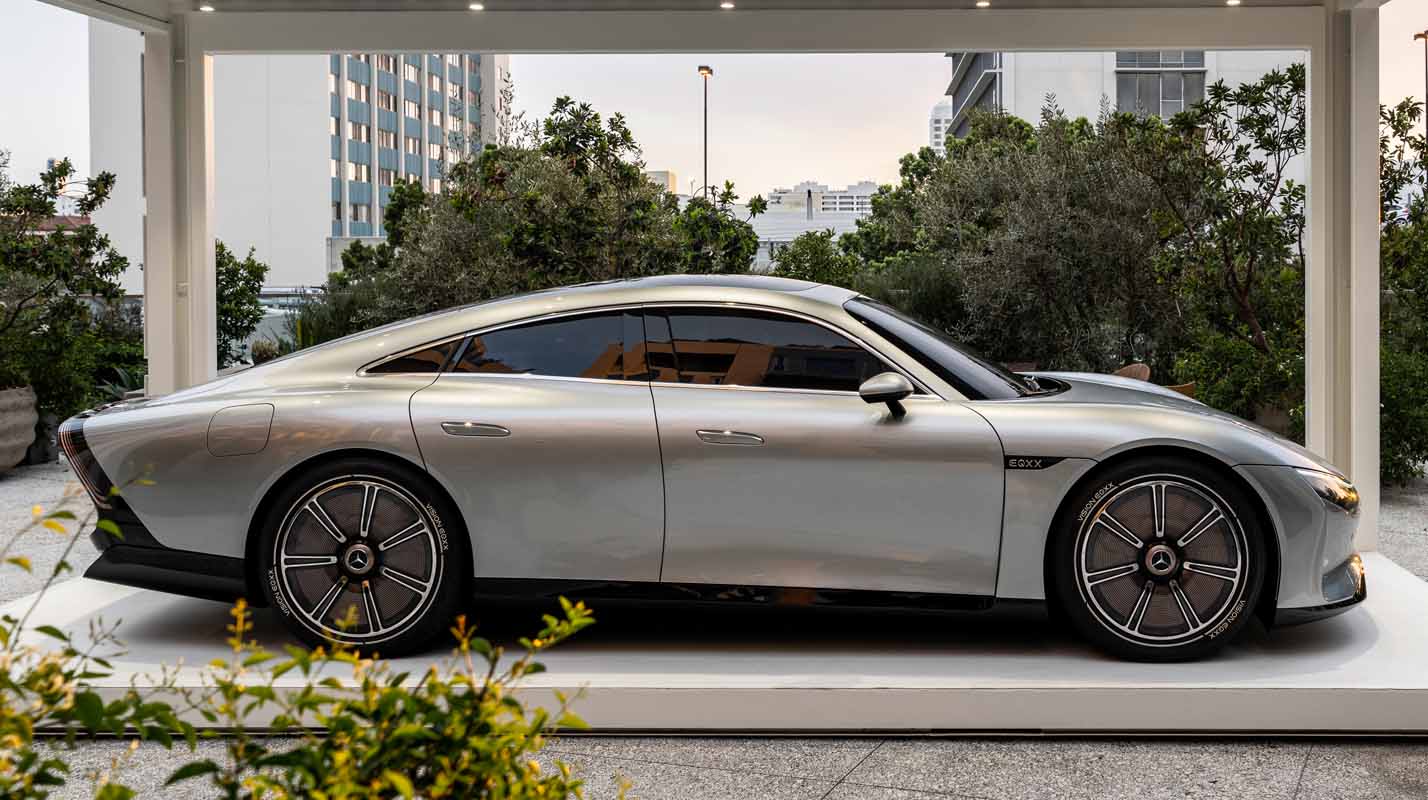
Mercedes-Benz – the front runner in automated driving and safety technologies
Since the invention of the automobile in 1886, Mercedes-Benz has repeatedly set standards in vehicle safety with new innovative technologies. Safety is a core element of the Mercedes-Benz brand. The company has been offering advanced driver assistance systems (SAE Level 2) in its vehicles for years. They can make life considerably easier in many everyday situations, providing support in areas such as speed and distance control, steering and lane changes. In December 2021, Mercedes-Benz was the first automotive manufacturer worldwide to secure internationally valid system approval for conditionally automated driving (SAE Level 3). What’s more, when it comes to parking, Mercedes is going one step further with pre-installation of INTELLIGENT PARK PILOT, which will enable highly automated parking (Automated Valet Parking; SAE Level 4).
SAE Level 2 systems support the driver and increase safety
With “Intelligent Drive”, the automaker bundles a wide range of driver assistance systems for partially automated driving (SAE-Level 2). The “DISTRONIC” Active Distance Assist can automatically maintain the preselected distance to vehicles ahead on all road types. Active Steering Assist provides lane-following support in the speed range up to 130 mph (210 km/h), while Active Lane Keeping Assist uses a camera to detect lane markings and lane edges in the speed range from 37 to 155 mph (60 to 250 km/h) and helps to avoid unintentional lane departure. Active Lane Change Assist provides cooperative support when changing to the adjacent lane. In conjunction with DIGITAL LIGHT, intuitive lighting is also provided at night. Active Emergency Stop Assist brakes the vehicle in its own lane to a standstill if it detects that the driver is permanently disengaged from the road while driving. As part of the standard Active Lane Keeping Assist system, this works even if “DISTRONIC” Active Distance Assist with Steering Assist is not switched on. Active Brake Assist uses the sensors installed in the vehicle to register whether there is a risk of collision with vehicles ahead, crossing or oncoming. In the event of an impending collision, the system can warn the driver visually and acoustically. If the driver’s braking is too weak, it is also possible to support him or her by increasing the braking force in line with the situation, as well as initiating autonomous emergency braking if there is no reaction from the driver. With these and many other intelligent systems, Mercedes-Benz is not only setting standards for safety technologies in automotive engineering, but is also taking an important step further on the road to autonomous driving.
SAE Level 3 DRIVE PILOT – taking automated driving to the next Level with the gift of time
In December 2021, Mercedes-Benz became the first automotive company in the world to meet the demanding legal requirements of the international UN-R157 for a Level 3 system[2] enabling conditionally automated driving. Mercedes-Benz is initially offering DRIVE PILOT in Germany, where 13,191 kilometres of motorway are approved for conditionally automated driving. Mercedes-Benz is also working intensively to obtain approval from the authorities for the two U.S. states of California and Nevada by the end of the year assuming the legal and regulatory framework allows use of the system. It initiates a radical paradigm shift that permits the vehicle to take over the dynamic driving task under certain conditions. This ultimate luxury experience enables customers to win back precious time when in the car through relaxation or productivity. For instance, they can communicate with work colleagues via in-car office tools, write messages and emails via the head unit, browse the internet or just sit back, relax and watch a movie.
DRIVE PILOT builds on the surround sensors of the Driving Assistance Package and comprises additional sensors that Mercedes-Benz considers indispensable for safe conditionally automated driving. These include LiDAR, as well as a camera in the rear window and microphones, especially for detecting blue lights and other signals from emergency vehicles. There is also a wetness sensor in the wheel well. The S-Class with optional DRIVE PILOT also has redundant steering and braking systems and a redundant on-board electrical system. This ensures that it remains manoeuvrable even if one of these systems fails and enables safe handover to the driver.
The top priority for Mercedes-Benz when introducing such a system is safety, which includes high demands on operational reliability. The exact location of the S-Class is determined using a highly accurate positioning system. This is much more powerful than conventional GPS. In addition, data obtained from satellite navigation are matched with sensor data and data from an HD map. The type of data collected by LiDAR, camera, radar and ultrasonic sensors can include information on road geometry, route characteristics, landmarks or traffic signs.
As well as the sensor data, the DRIVE PILOT receives information on road geometry, route profile, traffic signs and unusual traffic events (e.g. accidents or roadworks) from a digital HD map, which provides a three-dimensional street and environment image. The map data are stored in backend data centres and updated constantly. Each vehicle also stores an image of this map information on board, constantly comparing it with the backend data and updating the local data set if necessary. The HD map thus offers stable positioning through a representation of the surroundings independent of factors such as shadows or a dirty sensor. This high-precision map differs from maps for navigation devices through its greater accuracy down to centimetres rather than metres and its detailed intersection and track model among other things.
A powerful central control unit provides the necessary sophisticated software functions for conditionally automated driving. Within the framework of modern security architecture, important algorithms are calculated redundantly.
SAE Level 4 in car parks: INTELLIGENT PARK PILOT[3] can offer Automated Valet Parking in suitably equipped car parks
In Germany, some variants of the S-Class are the first series-production vehicles to offer pre-installation of the company’s INTELLIGENT PARK PILOT as optional equipment, with the EQS and EQE to follow later. INTELLIGENT PARK PILOT is designed to enable Automated Valet Parking in car parks equipped with the corresponding infrastructure from Bosch. The system then makes it possible to drive to and return from a reserved parking space – automatically, with nobody in the vehicle. Mercedes-Benz RDNA, in collaboration with Bosch, recently demonstrated Automated Valet Parking at an event in downtown Los Angeles using an EQS 580. It showed the effectiveness, convenience and practicality of this highly sophisticated, industry-leading new technology. Mercedes-Benz is evaluating whether pre-installation will be offered in the U.S. in the future through ongoing monitoring of the market.
The vision is that the driver parks the vehicle in a designated drop-off area at the multi-storey car park and starts the parking procedure via a smartphone app. If the app confirms that control of the vehicle has been taken over by the Automated Valet Parking infrastructure, the driver can leave the car park. The vehicle is then started automatically and drives to its reserved parking space guided by the sensors in the car park. It stops in front of any obstacles such as pedestrians or other vehicles. Upon their return, the driver can hail the vehicle via a simple smartphone command. It then drives to a designated pick-up area.
EQE – the new business avant-garde for the electric era
The new EQE is the second vehicle based on the EVA2 premium-class electric architecture. Engineered from scratch for electric vehicles, it enables what Mercedes-Benz calls “purpose design” and delivers significant benefits in aerodynamics and efficiency. The sporty EQE brings the concept of the business saloon into the future. It has all the essential features of the EQS luxury liner in a more compact package. These include the MBUX Hyperscreen, which is the absolute highlight of the interior. This 56-inch curved screen sweeps across almost the entire width of the cabin, incorporating the instrument cluster, infotainment and passenger display in a seamless design. The section of the MBUX Hyperscreen dedicated to the front-seat passenger is a 12.3‑inch OLED display and control surface. It enables them to watch content such as video streaming or TV while the vehicle is in motion, making journeys more enjoyable and entertaining. The system uses an intelligent, camera-based blocking logic that is able to detect if the driver is looking at the passenger display. If so, the system automatically dims dynamic content. Mercedes-Benz anticipates introducing this feature this year for Mercedes-EQ vehicles sold in the U.S.
Further highlights of the EQE include the MBUX Interior Assistant, the MBUX head-up display, ENERGIZING AIR CONTROL with HEPA filter, DIGITAL LIGHT and rear-axle steering. A raft of completely new vehicle functions can be activated OTA, such as the projection functions of DIGITAL LIGHT or an additional sound experience, which further enhances the avant-garde interior ambience with rich, fulsome soundscapes.
The battery in the EQE (WLTP: combined electrical consumption: 18.7–15.9 kWh/100 km, combined CO2 emissions: 0 g/100 km)[4] has a usable energy content of approx. 90 kWh for a range of up to 660 km (WLTP) – ample for comfortable long-distance travel. Plus, for even longer journeys, a 15-minute charge at a rapid charging station delivers up to a further 250 km (WLTP).
[1] Range figures are preliminary based on digital simulations in real-life traffic. The VISION EQXX has not undergone type approval or homologation.
[2] SAE Level 3: the automated driving function takes over certain driving tasks. However, a driver is still required. The driver must be ready to take control of the vehicle at all times when prompted to intervene by the vehicle
[3] INTELLIGENT PARK PILOT pre-installation: This function cannot be used at this time. Future use of the INTELLIGENT PARK PILOT will only be possible if national laws permit the operation of Automated Valet Parking. It also requires car parks to be equipped with the necessary infrastructure and the corresponding Mercedes me connect service to be available and booked for the respective vehicle variant of the S-Class, EQS and EQE.
[4] The WLTP electrical consumption has been determined on the basis of Regulation (EU) No. 2017/1151.
